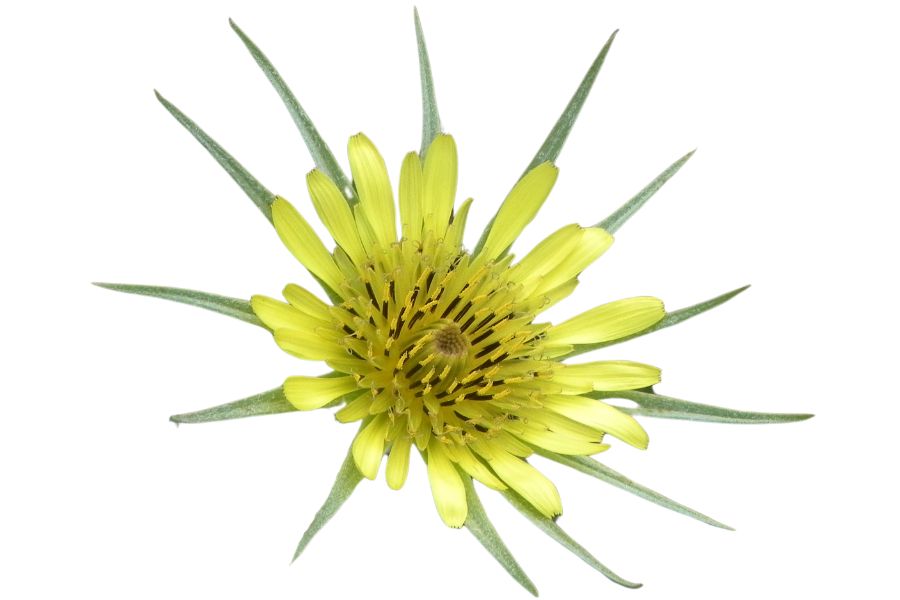Edible plants are growing wild all across Colorado, whether you’re high in the alpine or walking a trail just outside town. Wild mint adds a cooling sharpness to your fingers just by brushing past. Oregon grape berries may look too tart to bother with, but they have surprising uses if you know how to work with them.
Not everything that looks edible should go in your basket, which is why it helps to know which flavors signal you’re on the right track. Prairie onion bulbs, when crushed, give off a clean, unmistakable scent, while lamb’s quarters have a mealy texture that sets them apart from lookalikes.
Recognizing these traits makes the experience more engaging than it would be with store-bought food.
Many of Colorado’s edible plants don’t seem valuable at first glance, especially when they’re tangled in weeds or pushing up beside a rock. But the more you learn, the more likely you are to come back from a walk with a surprising mix of ingredients.
What We Cover In This Article:
- The Edible Plants Found in the State
- Toxic Plants That Look Like Edible Plants
- How to Get the Best Results Foraging
- Where to Find Forageables in the State
- Peak Foraging Seasons
- The extensive local experience and understanding of our team
- Input from multiple local foragers and foraging groups
- The accessibility of the various locations
- Safety and potential hazards when collecting
- Private and public locations
- A desire to include locations for both experienced foragers and those who are just starting out
Using these weights we think we’ve put together the best list out there for just about any forager to be successful!
A Quick Reminder
Before we get into the specifics about where and how to find these plants and mushrooms, we want to be clear that before ingesting any wild plant or mushroom, it should be identified with 100% certainty as edible by someone qualified and experienced in mushroom and plant identification, such as a professional mycologist or an expert forager. Misidentification can lead to serious illness or death.
All plants and mushrooms have the potential to cause severe adverse reactions in certain individuals, even death. If you are consuming wild foragables, it is crucial to cook them thoroughly and properly and only eat a small portion to test for personal tolerance. Some people may have allergies or sensitivities to specific mushrooms and plants, even if they are considered safe for others.
The information provided in this article is for general informational and educational purposes only. Foraging involves inherent risks.
The Edible Plants Found in the State
Wild plants found across the state can add fresh, seasonal ingredients to your meals:
Dandelion (Taraxacum officinale)
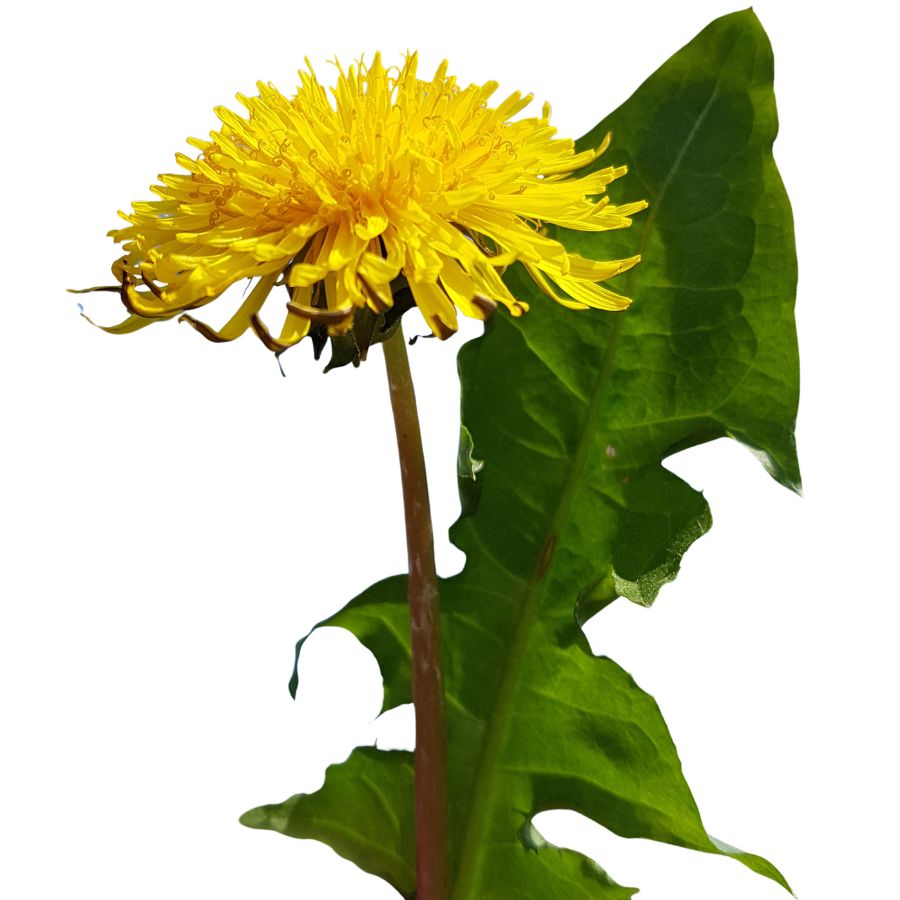
Bright yellow flowers and jagged, deeply toothed leaves make dandelions easy to spot in open fields, lawns, and roadsides. You might also hear them called lion’s tooth, blowball, or puffball once the flowers turn into round, white seed heads.
Every part of the dandelion is edible, but you will want to avoid harvesting from places treated with pesticides or roadside areas with heavy car traffic. Besides being a food source, dandelions have been used traditionally for simple herbal remedies and natural dye projects.
Young dandelion leaves have a slightly bitter, peppery flavor that works well in salads or sautés, and the flowers can be fried into fritters or brewed into tea. Some people even roast the roots to make a coffee substitute with a rich, earthy taste.
One thing to watch out for is cat’s ear, a common lookalike with hairy leaves and branching flower stems instead of a single, hollow one. To make sure you have a true dandelion, check for a smooth, hairless stem that oozes a milky sap when broken.
Lamb’s Quarters (Chenopodium album)
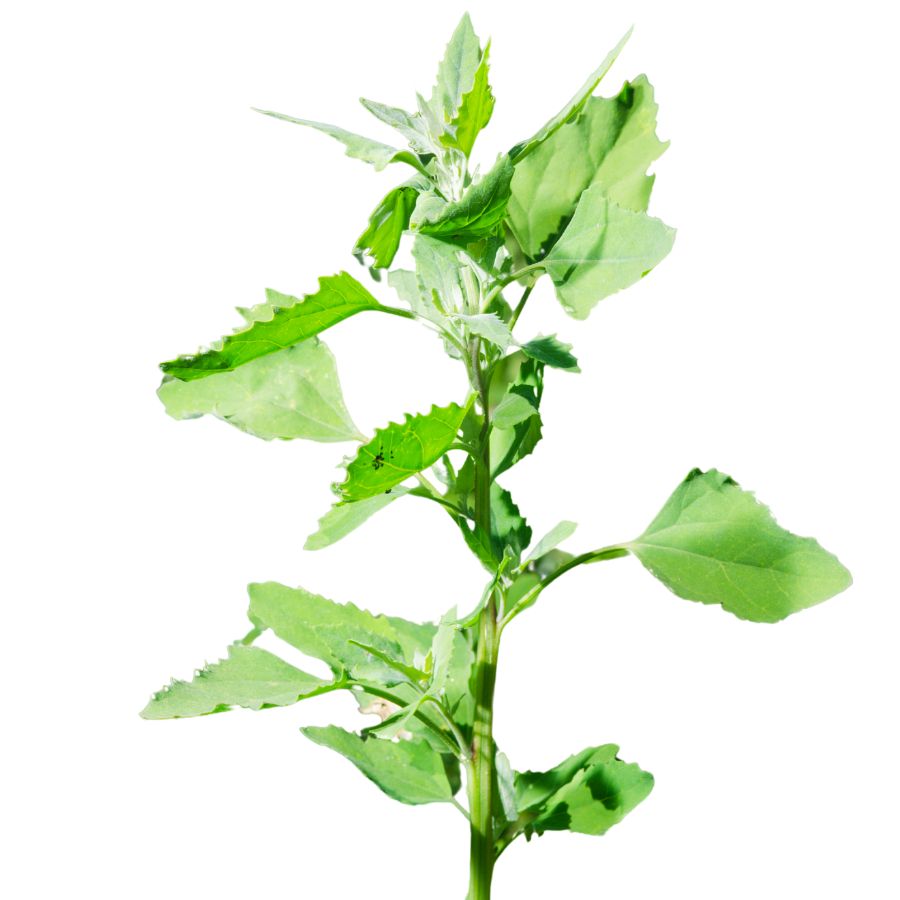
Lamb’s quarters, also called wild spinach and pigweed, has soft green leaves that often look dusted with a white, powdery coating. The leaves are shaped a little like goose feet, with slightly jagged edges and a smooth underside that feels almost velvety when you touch it.
A few plants can be confused with lamb’s quarters, like some types of nightshade, but true lamb’s quarters never have berries and its leaves are usually coated in that distinctive white bloom. Always check that the stems are grooved and not round and smooth like the poisonous lookalikes.
When you taste lamb’s quarters, you will notice it has a mild, slightly nutty flavor that gets richer when cooked. The young leaves, tender stems, and even the seeds are all edible, but you should avoid eating the older stems because they become tough and stringy.
People often sauté lamb’s quarters like spinach, blend it into smoothies, or dry the leaves for later use in soups and stews. It is also rich in oxalates, so you will want to cook it before eating large amounts to avoid any problems.
Purslane (Portulaca oleracea)
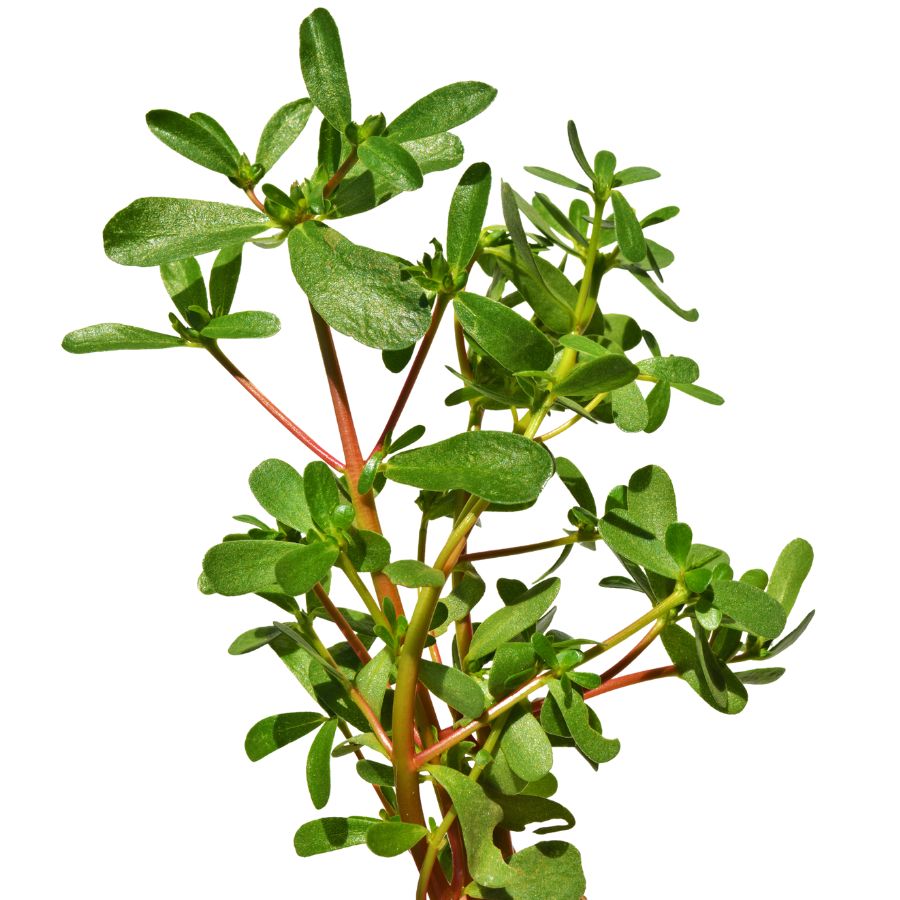
Purslane is a hardy, low-growing plant that’s also sometimes known as little hogweed or verdolaga. It has smooth, reddish stems and thick, paddle-shaped leaves that feel a bit waxy when you touch them.
The stems, leaves, and tiny yellow flowers are all edible, while the roots are not typically eaten. Purslane has a crisp texture with a slightly tart, lemony flavor that works well raw or cooked.
Some plants that look similar include spurge, which has a milky sap and is not edible, so it is important to check for purslane’s smooth, succulent stems and lack of sap. Always double-check by gently snapping a stem to make sure no white liquid appears.
You can toss fresh purslane into salads, sauté it lightly like spinach, or pickle it for later use. Its mild tartness and slight crunch make it a refreshing addition to sandwiches, soups, and even stir-fries.
Chokecherry (Prunus virginiana)
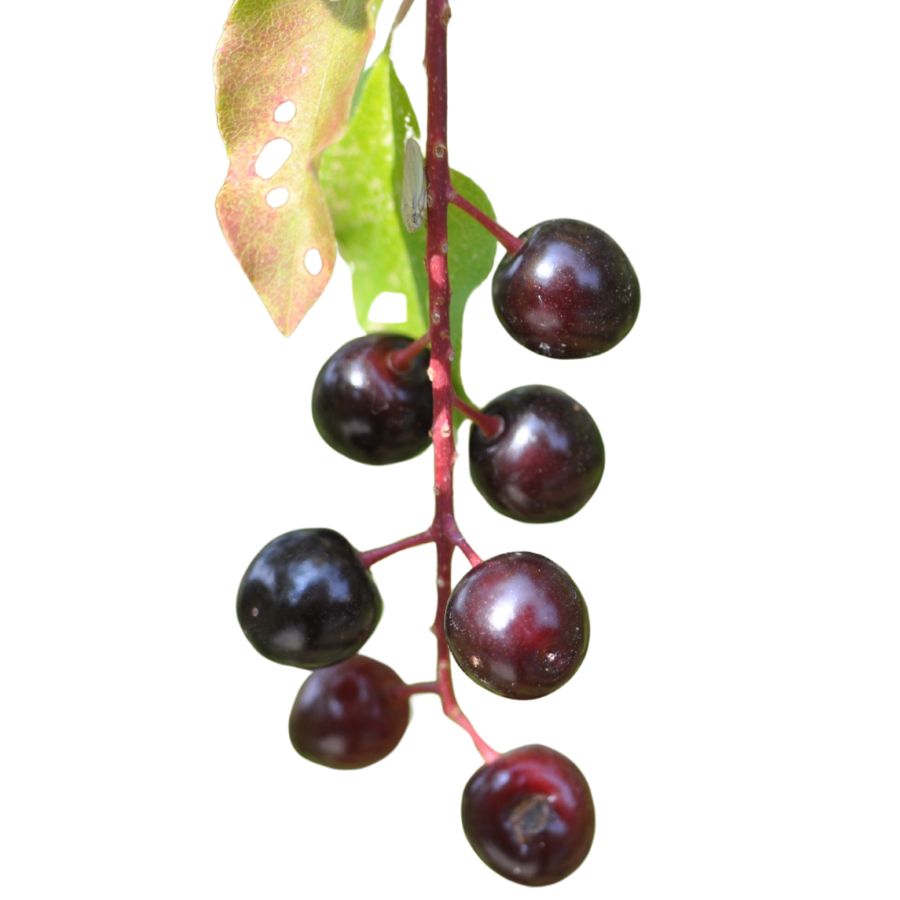
Clusters of dark berries hanging from a woody shrub usually indicate chokecherries, especially when the leaves are oval with finely toothed edges. These berries turn from red to deep purple or black when they’re ready to eat.
Chokecherries are rarely eaten raw due to their bitterness, but they shine in cooked recipes like preserves, sauces, or even homemade wine. Boiling the fruit and straining it helps separate the pulp from the inedible seeds.
It’s easy to mix up chokecherries with other wild cherries, but true chokecherries have longer, narrower leaves and a more astringent taste. Avoid anything with rounder, solitary berries or a sweet scent without the signature tartness.
Their texture is slightly gritty around the pit, and the flavor improves significantly with sugar and heat. A strong astringent quality dominates the raw berry, but the processed pulp becomes rich and deeply flavored.
Oregon Grape (Mahonia repens)
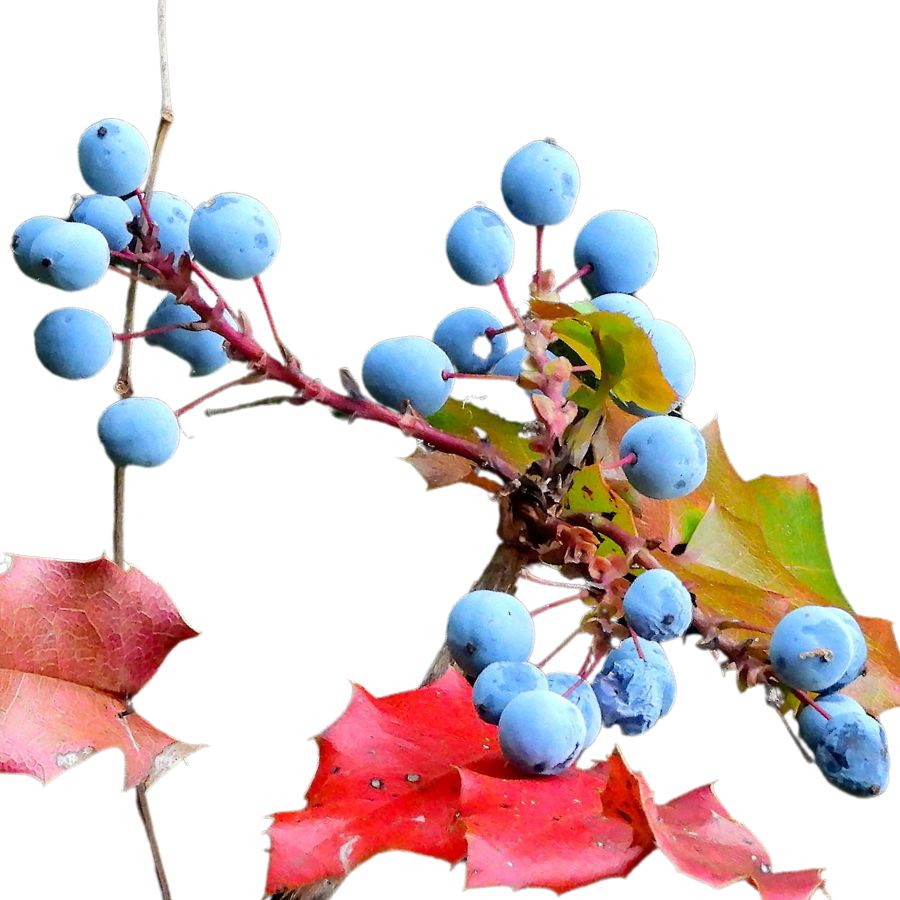
You’re looking at Oregon grape when you find leathery, pointed leaves and dusty purple berries clinging to woody stems close to the ground. The berries are edible but intensely sour and best used in cooked preparations.
Some people turn them into jellies or juice, while others blend them with sweeter fruits in syrups or compotes. The thick skin and bitter flesh mean most people don’t snack on them raw.
Oregon grape is occasionally mistaken for some types of barberry, but barberries are more elongated and often brighter red. The leaf shape is a quick giveaway—Oregon grape has broader, spiny leaflets in a rosette pattern.
Don’t try using the roots or stems in food; only the berries are safe to eat. With a strong tannic edge, the flavor holds up well to heat and sugar, especially in long-simmered recipes.
Sunflower (Helianthus annuus)
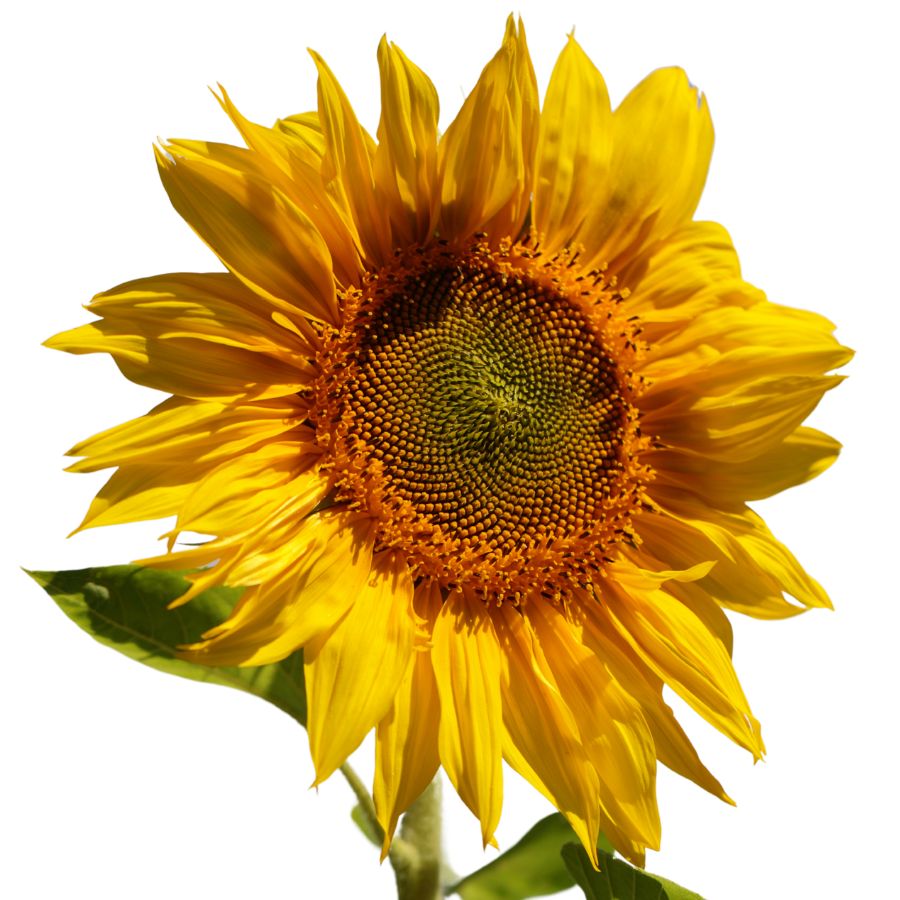
Sunflowers have a thick, rough stem and large, broad leaves with a slightly sandpapery texture. The huge circular flower head is made up of bright yellow petals surrounding a dark center packed with seeds.
The seeds inside the flower head are edible once they mature, and you can eat them raw, roasted, or ground into meal. The young flower buds are also edible and can be steamed or sautéed like an artichoke.
When gathering sunflower seeds, make sure not to confuse the plant with certain types of wild composites that have smaller flowers and thin, spindly stalks. True sunflowers always have a thick, sturdy stem and a flower head that can be as wide as a dinner plate.
Sunflower seeds have a mild, nutty flavor and a tender crunch when fresh. You can also press the seeds for oil or sprout them for a nutritious snack.
Stinging Nettle (Urtica dioica)
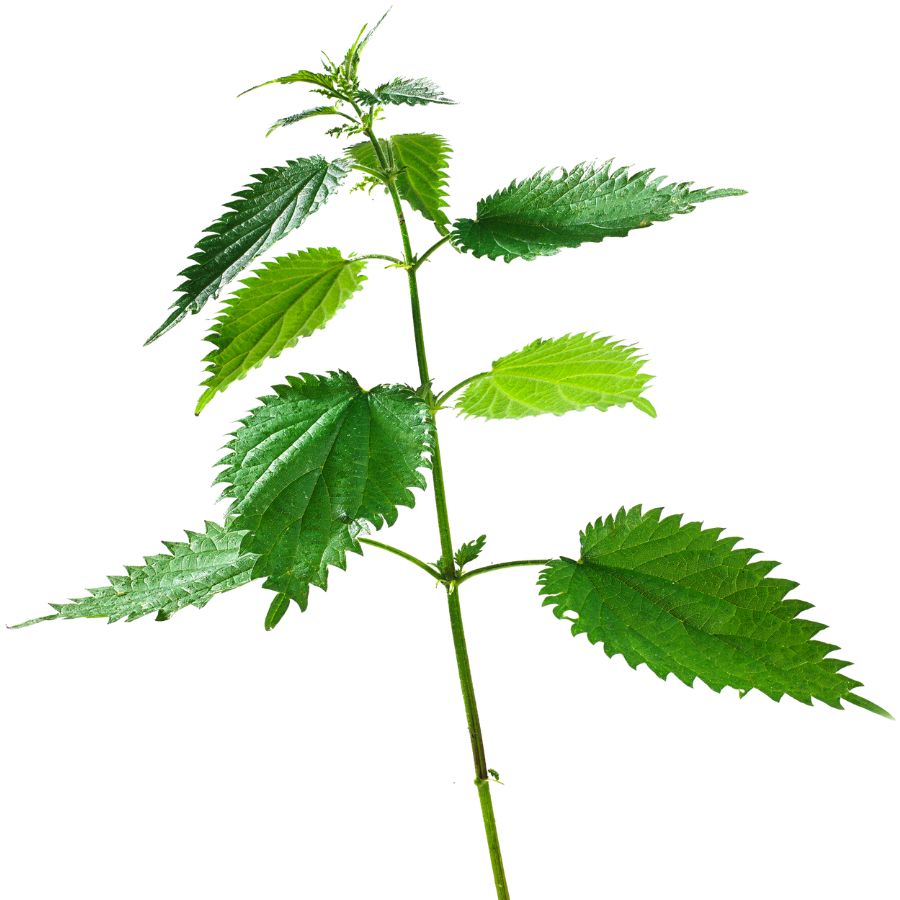
Stinging nettle is also known as burn weed or devil leaf, and it definitely earns those names. The tiny hairs on its leaves and stems can leave a painful, tingling rash if you brush against it raw, so always wear gloves when handling it.
Once it’s cooked or dried, those stingers lose their punch, and the leaves turn mild and slightly earthy in flavor. The texture softens too, making it a solid substitute for spinach in soups, pastas, or even as a simple sauté.
The young leaves and tender tops are what you want to collect. Avoid the tough lower stems and older leaves, which can be gritty or unpleasant to chew.
Some people confuse stinging nettle with purple deadnettle or henbit, but those don’t sting and have more rounded, fuzzy leaves. If the plant doesn’t make your skin react, it’s not stinging nettle.
Wild Mint (Mentha arvensis)

You’re probably familiar with the strong scent of wild mint, which comes from the essential oils concentrated in its leaves. It has square stems, lance-shaped leaves with slightly toothed edges, and pale lilac flower clusters.
The fresh leaves can be eaten raw, cooked into soups, or muddled into drinks for a crisp flavor. Expect a bright, menthol-like kick with a hint of sweetness.
False mint species like purple deadnettle grow in similar spots but lack the menthol smell and have fuzzy leaves. If the plant doesn’t smell like mint, it probably isn’t.
Stick to the leaves and younger stems for eating because the woody stalks aren’t palatable. Wild mint also holds up well when dried and stored for tea or seasoning.
Yarrow (Achillea millefolium)
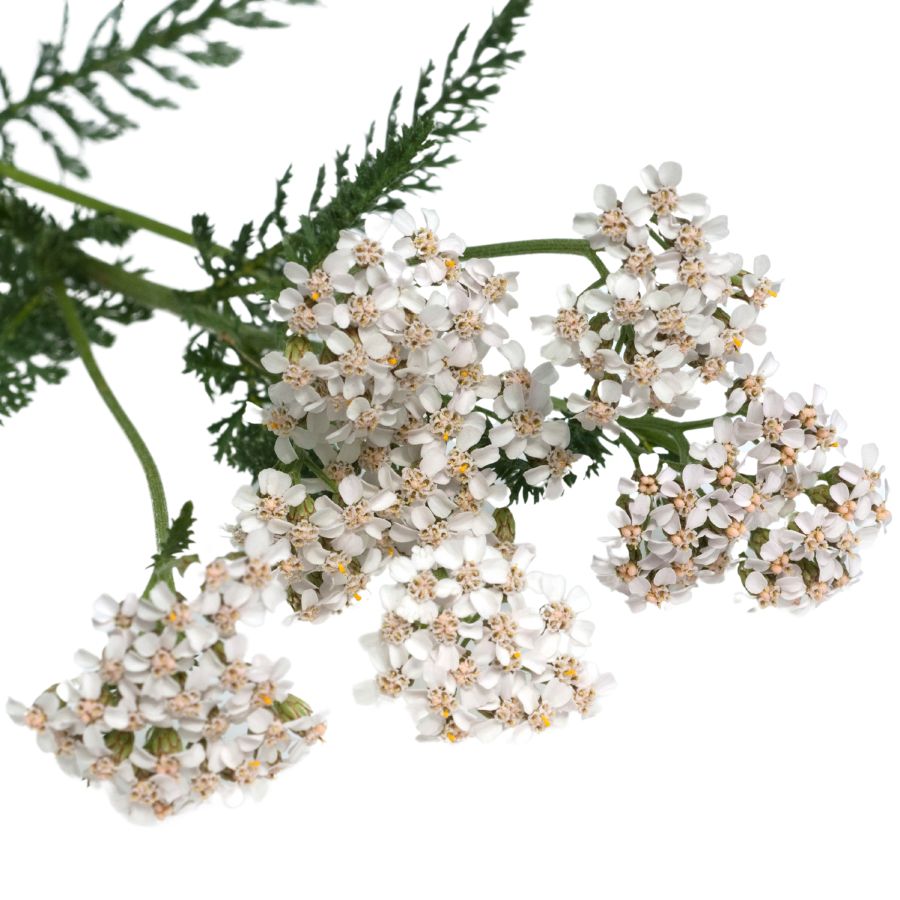
The first thing you’ll notice about yarrow is its flat-topped clusters of tiny white flowers and its finely divided, almost feathery leaves. You can eat the leaves and flowers, though the taste is bitter and earthy, with a slightly peppery kick.
It’s often used in small amounts to flavor soups, sauces, or infused into vinegar for a wild herbal edge. Drying the leaves for later use is common, especially if you want to tame some of the bitterness.
Be cautious not to confuse it with poison hemlock, which has smooth purple-spotted stems and lacks the fern-like leaves of yarrow. If you crush a yarrow leaf, the strong herbal scent is another helpful clue.
Don’t eat the stems or roots—they’re tough and unpleasant. Stick to the upper leaves and blossoms if you’re planning to add it to food.
Golden Currant (Ribes aureum)
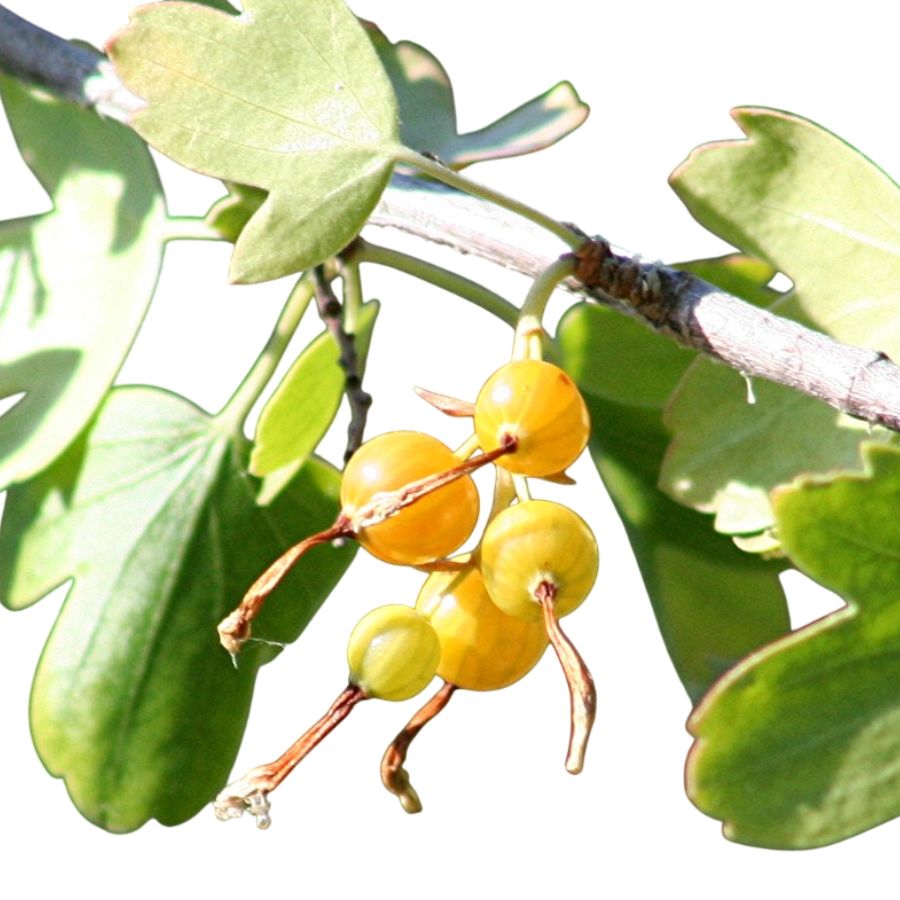
Golden currants produce small, round berries with smooth skin and a color range that includes golden yellow, red, and deep purple. Their flavor is tangy, slightly sweet, and develops a deeper complexity when cooked down.
The berries are edible raw, but you’ll probably want to use them in syrups, sauces, or dried into snacks. Some people dehydrate them like raisins, though they’re smaller and more tart.
Leaves are palmately lobed and lightly scented, which helps set golden currants apart from potentially toxic lookalikes like some ornamental currant hybrids. Those lookalikes often lack the same strong fragrance and have less pronounced lobing on the leaves.
Don’t eat the unripe berries in large amounts, as they can be harsh on the stomach. Fermenting the juice was a traditional method of preservation among various communities, adding a unique use to its culinary profile.
American Plum (Prunus americana)
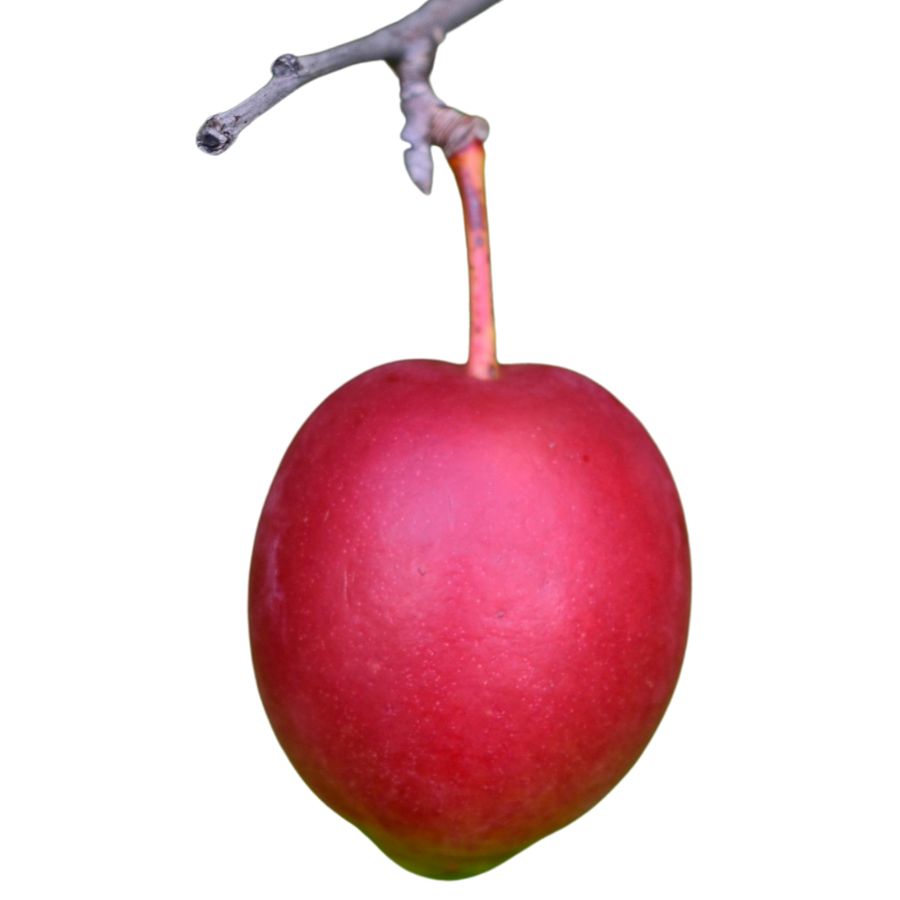
American plum, also called wild plum or river plum, produces small round fruits that range in color from yellow to deep red when ripe. The skin is slightly tart, but the flesh is soft, juicy, and sweet with a hint of spice.
You can eat the fruit raw or turn it into jellies, sauces, or wines—its natural pectin makes it ideal for preserves. Just avoid the seeds and leaves, which contain compounds that can release cyanide when crushed or chewed.
Its bark is rough and dark, and the branches often have short, sharp spines. The plant’s simple oval leaves and white spring flowers help distinguish it from less edible lookalikes like black cherry, which has longer, narrower leaves with a more bitter fruit.
If the fruit has a strong bitter almond smell when crushed, steer clear—it might be a different species altogether. American plum fruit clusters tend to be smaller and more tightly packed than those of cultivated varieties.
Nodding Onion (Allium cernuum)
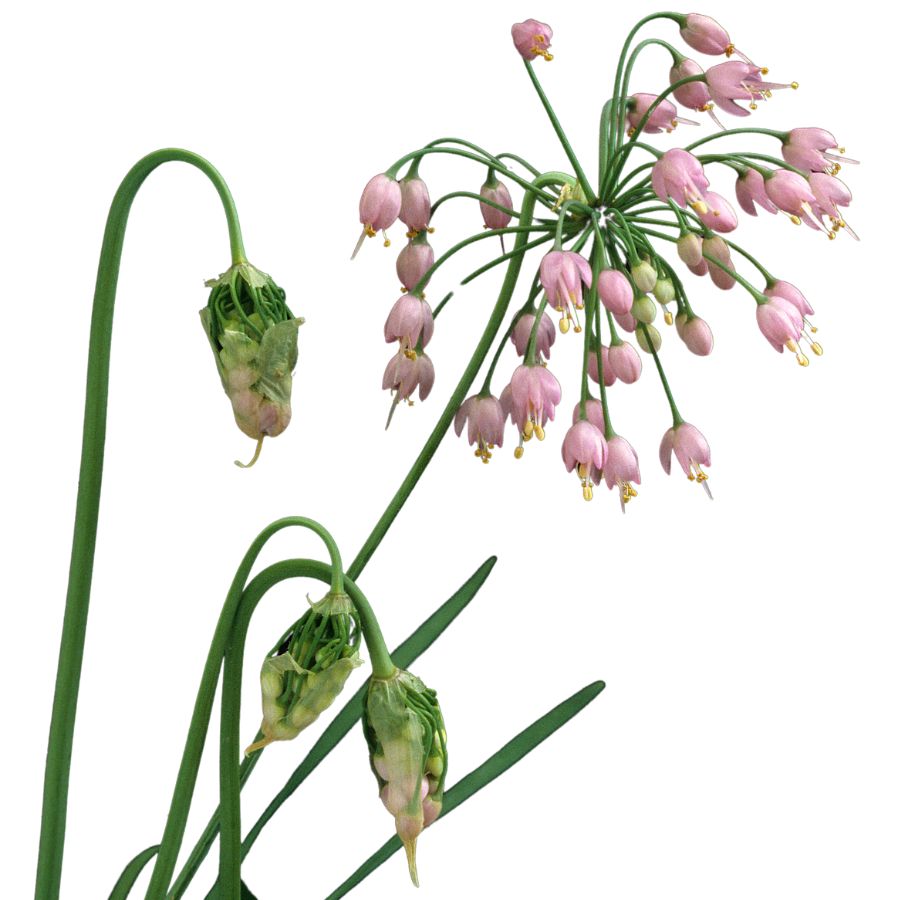
When you come across nodding onions, you’ll notice the drooping flower heads perched on tall, slender stalks. The narrow, grass-like leaves and the pinkish-white blossoms help distinguish them from toxic lookalikes like death camas, which lacks the onion smell when crushed.
You can eat the leaves, bulbs, and flowers, all of which carry a strong onion flavor with a slightly sweet finish. The texture is crisp when raw and softens nicely when sautéed or added to soups.
One popular way to use nodding onions is to mince the greens into spreads or salads, or grill the bulbs whole like scallions. Pickling the flower buds is another method that preserves their tang and adds punch to charcuterie boards.
Avoid harvesting from roadsides or polluted areas, since these plants can absorb contaminants through their roots. While edible, the plant loses flavor quickly after picking, so it’s best to use it fresh whenever possible.
Prairie Onion (Allium textile)
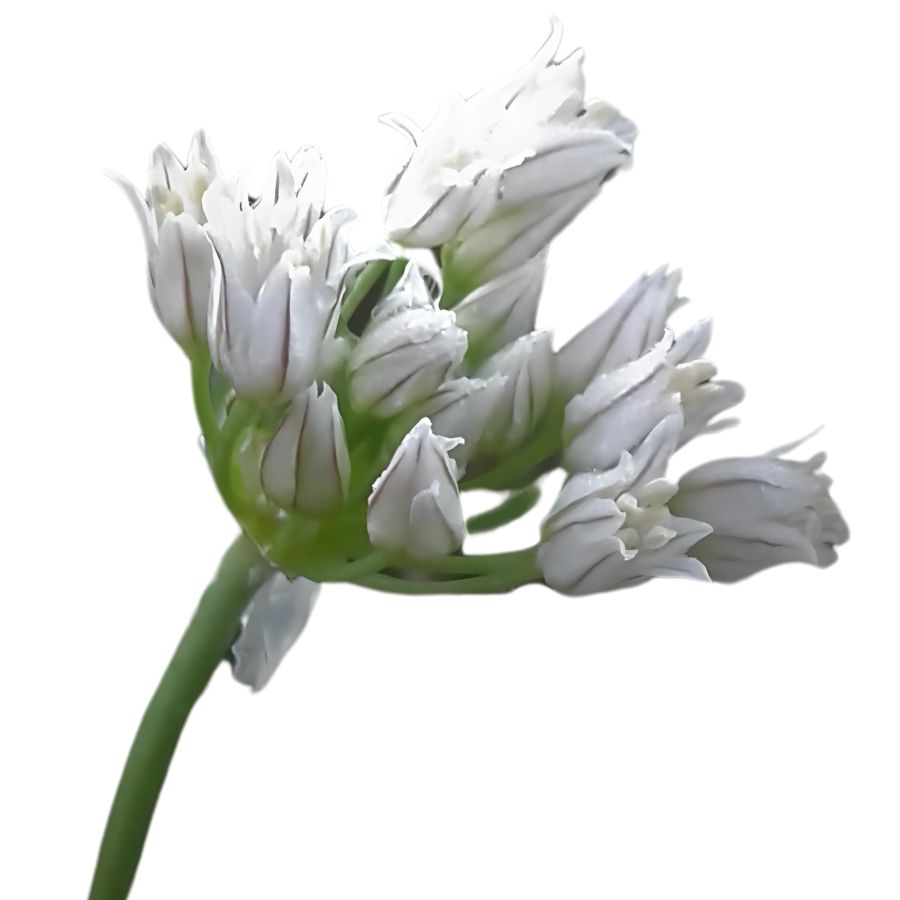
In shortgrass areas or rocky soil, prairie onion grows with a clump of thin, round leaves and a single, flowering stalk. The smell is your most reliable guide: true prairie onion has a strong onion scent that intensifies when cut.
Its bulb is edible, just like the leaves and flowers, and it has a fresh, slightly pungent flavor that deepens with cooking. You can roast the bulb, mix chopped leaves into dressings, or add the flowers raw as a garnish with a subtle onion kick.
One thing to watch out for is confusion with death camas, which grows in the same types of areas but has no onion smell and blooms earlier with more upright flowers. Always rely on smell and leaf shape before tasting.
The plant has no significant toxicity, but eating it in large quantities may irritate the stomach for some people, just like with other wild alliums. Its texture is closest to green onions—crisp and moist with a bit more bite in the raw greens.
Woods’ Rose (Rosa woodsii)
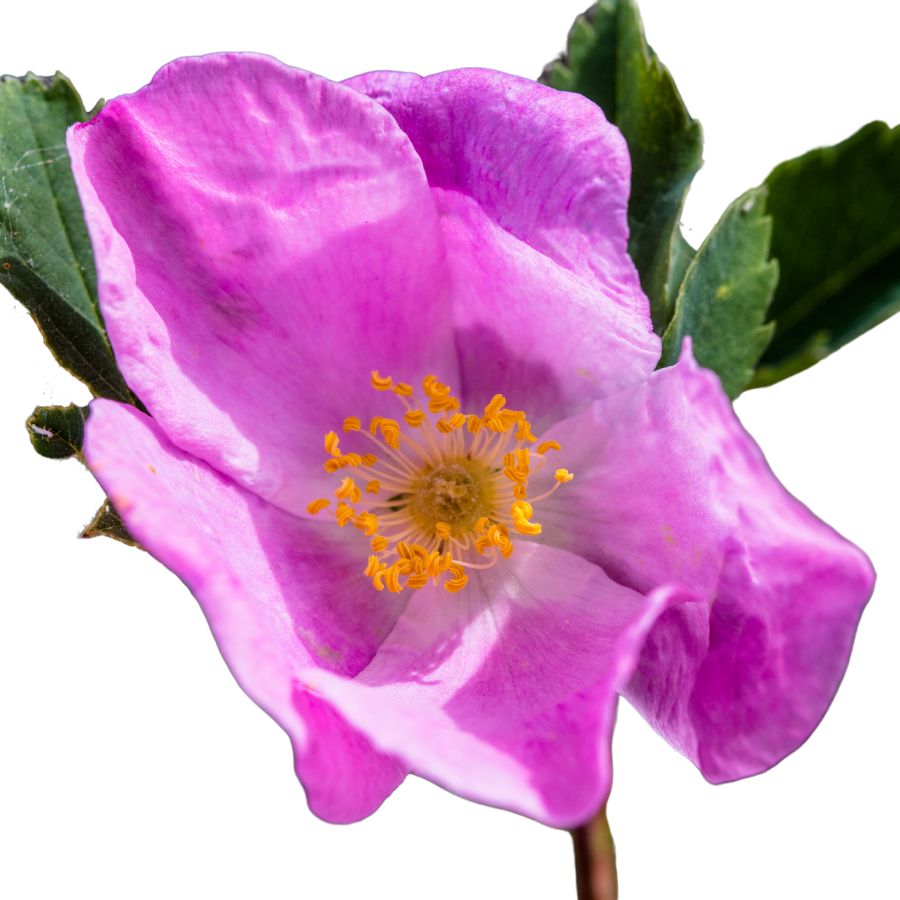
Woods’ rose, also referred to as wild rose or western wild rose, grows as a shrub with pink to deep rose-colored blooms and curved prickles along its stem. Its red-orange hips are round or slightly oval and ripen fully to a firm, leathery texture.
You can eat the hips raw after removing the seeds and tiny hairs, but they’re more palatable when cooked into sauces, used in baked goods, or dried for tea. The flavor is tart, similar to crabapple, and the flesh is dense and chewy when dried.
Rose petals from this plant are also edible and can be eaten fresh or used to flavor vinegars and desserts. Be cautious around rose lookalikes like Japanese rose, which produces similar hips but often has more rigid stems and smoother leaves.
Never ingest the stems or roots—those parts have no food value and can irritate your digestive tract. The hips were used in some traditional food preparations for their nutritional benefits, especially during food-scarce times.
Tulip Prickly Pear Cactus (Opuntia phaeacantha)
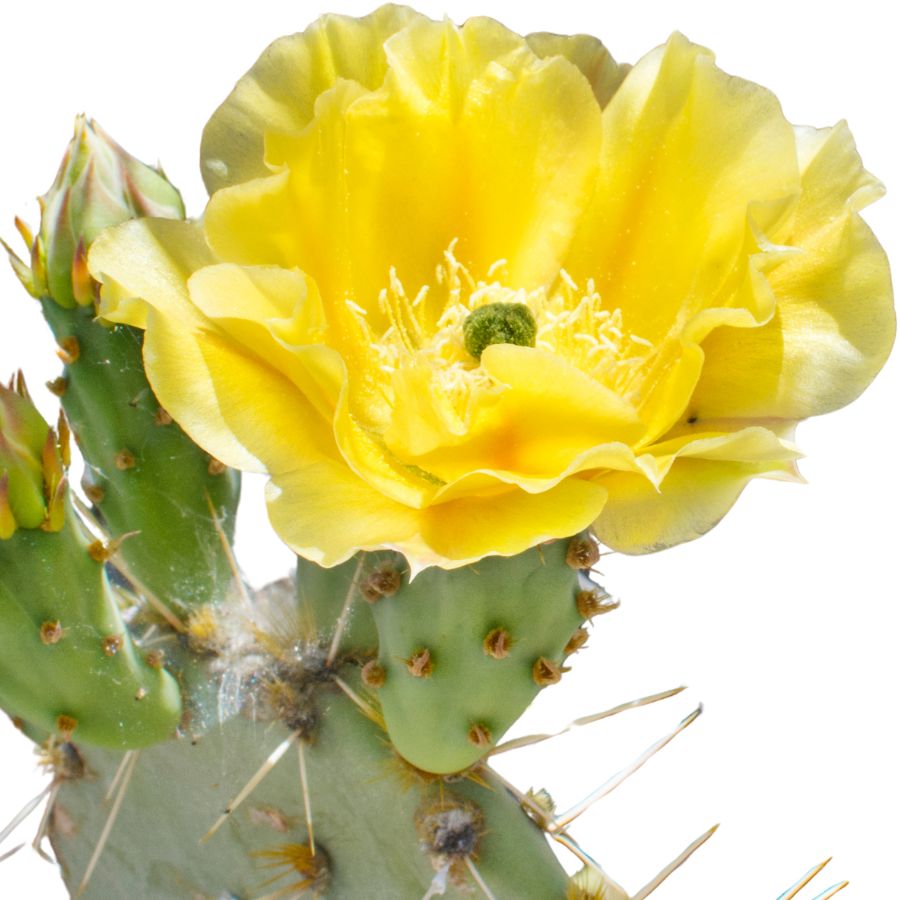
Tulip prickly pear cactus pads are green, oval, and covered with clusters of long reddish spines, and its large yellow-to-orange flowers help distinguish it from less palatable relatives. Both the pads and the fruits are edible, but you must clean them thoroughly to remove all spines and glochids.
When prepared properly, the pads have a crisp texture with a tart, lemony taste, while the fruit is sweet and juicy with a flavor similar to melon. You can grill the pads with oil and spices or boil them to add to stews and tacos, while the fruit is often peeled and eaten raw or used in jams.
Other prickly pears might look similar but have woody or overly mucilaginous pads that don’t cook down well or taste bitter. The tulip variety has smoother flesh and fewer interior fibers when harvested at the right size.
Never eat any part of the cactus raw without removing the glochids, which are tiny, hair-like spines that can embed painfully in your skin and mouth. The interior flesh is edible, but the peel and spines should be discarded completely.
Yellow Salsify (Tragopogon dubius)
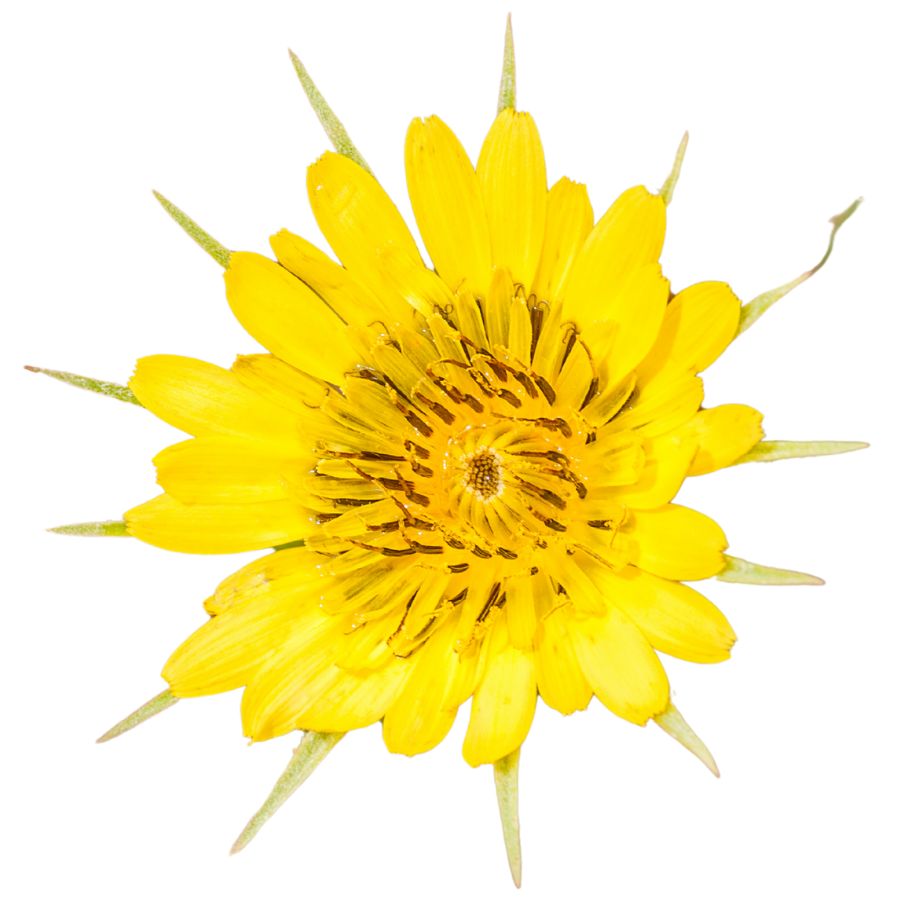
Yellow salsify has a large puffball seed head that resembles a dandelion but is much bigger, and its flower has sharp, pointed petals. You’ll usually see a single stem with long, narrow leaves that run directly along the stalk without branching.
The thick taproot is the main edible part and is often peeled and cooked like a vegetable—its flavor is mild with a hint of oyster and nuttiness. Some people ferment or pickle the root to preserve it.
You can also eat the flower buds before they open, and the stems can be peeled and steamed for a tender, slightly sweet bite. The root becomes stringy if you let it age too long before harvesting.
Don’t confuse it with wild lettuce or sow thistle, which have similar leaves but don’t form the same large spherical seed head and usually grow more branched stems. Unlike those, yellow salsify has a distinct single flower per stem and smoother, less bitter leaves.
Common Peppergrass (Lepidium densiflorum)
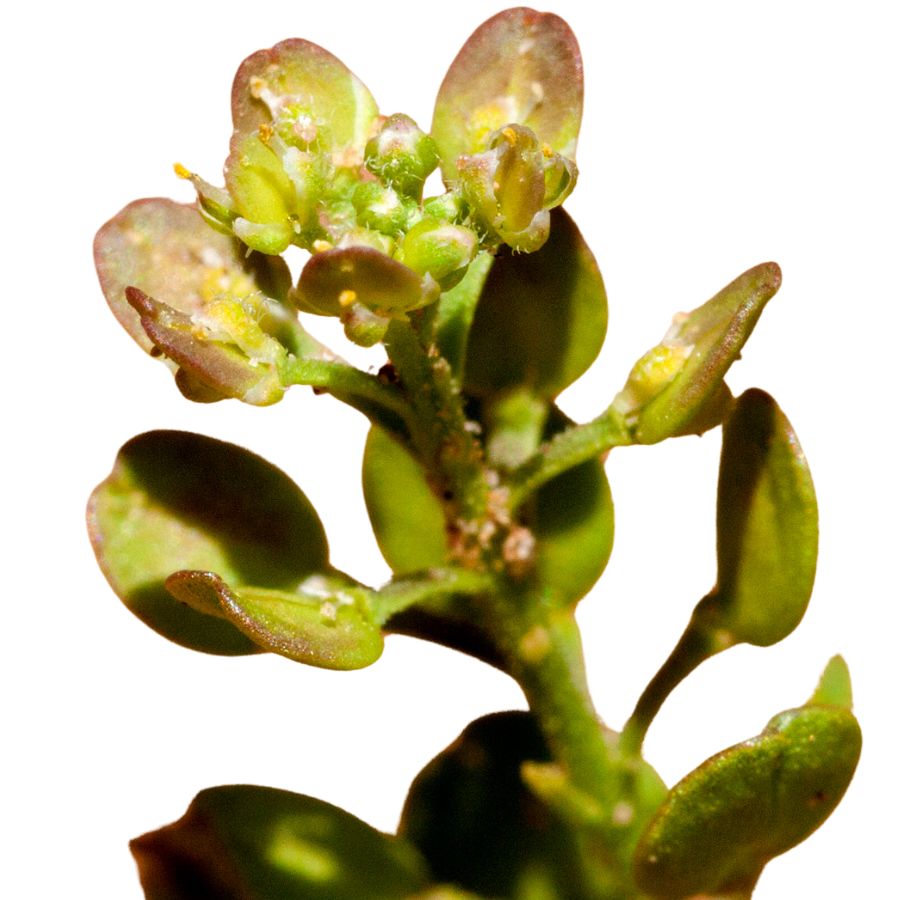
Common peppergrass has a sharp, mustard-like bite that hits quickly and fades, making it useful in small amounts as a spicy garnish. The young seed pods and leaves are edible raw or cooked, though the older leaves turn fibrous and bitter.
Its flat, circular seed pods grow along upright stems and are the easiest way to distinguish it from lookalikes like Virginia pepperweed, which has more elongated seed pods. You can also check the leaves—common peppergrass has deeply toothed, sometimes lobed lower leaves, while its upper leaves clasp the stem.
Chop the leaves and pods into a salad or stir them into soups at the end of cooking to preserve their flavor. Some people grind the dried seeds and use them like a poor man’s pepper.
Avoid eating plants growing too close to roads or treated fields, as this species readily absorbs pollutants from the soil. There’s nothing toxic about the plant itself, but contaminants can concentrate in the tissues.
Mountain Sorrel (Oxyria digyna)

If you’re hiking in alpine zones, mountain sorrel is the low-growing plant with rounded, clover-like leaves and a reddish stem that you’ll find hugging the rocks. The leaves are the edible part and have a crisp texture with a sharp, lemony flavor that hits right away.
Mountain sorrel has no dangerous lookalikes, though it can be confused with sheep sorrel, which has arrow-shaped leaves instead of round ones. You can eat it raw or chop it into soups and broths to add a tangy bite.
The flavor comes from its high oxalic acid content, which means you shouldn’t eat large amounts if you have kidney issues. That same acid gives it a clean, sour taste that cuts through rich dishes easily.
People preserve mountain sorrel by drying the leaves or steeping them in vinegar to hold onto the tartness. The stems and flowers are technically edible but aren’t as pleasant as the leaves.
Cleavers (Galium aparine)
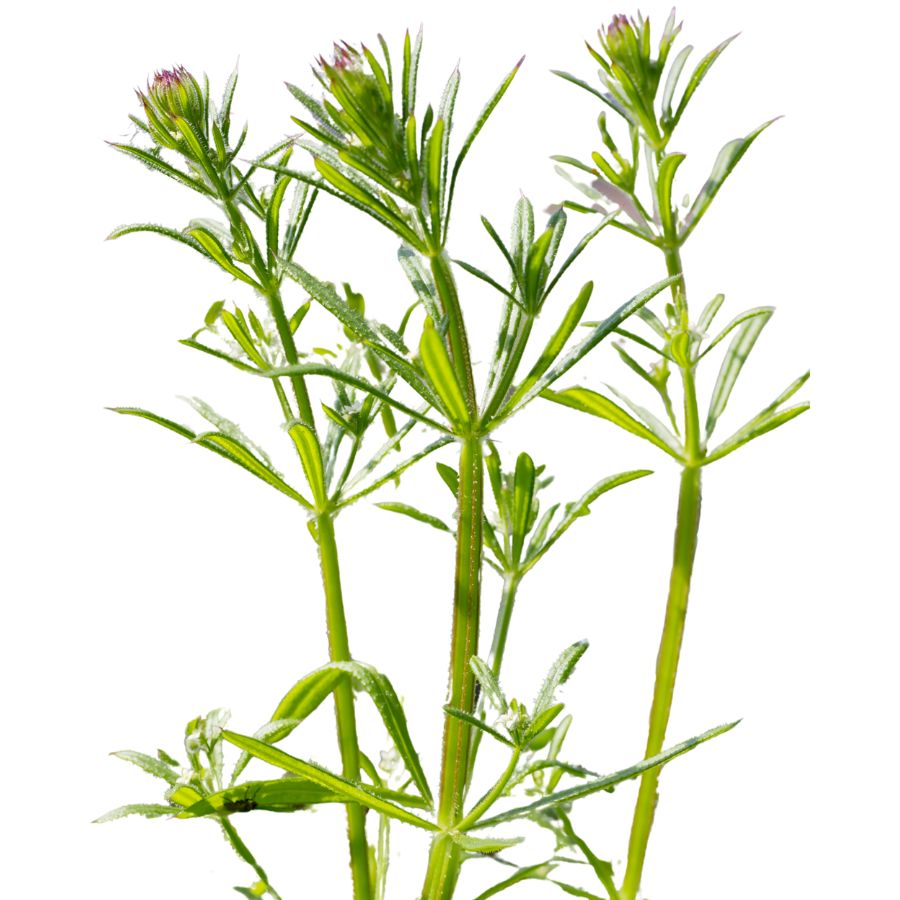
The sticky-stemmed plant cleavers, also called goosegrass and catchweed, has square stems covered in tiny hooked hairs that cling to your skin and clothing. Its whorled leaves grow in tight circles and have the same Velcro-like surface that makes the whole plant feel bristly.
You can eat the tender tips raw, though they’re fibrous and better when steamed, simmered into broth, or pureed for juice. The taste is mild and green, but the texture is stringy unless you cook it down or strain it.
Cleavers are sometimes confused with sweet woodruff, which shares a similar leaf arrangement but has smoother stems and a sweet scent when dried. Don’t mix them up with hedge bedstraw either—cleavers has that signature clinging texture, while hedge bedstraw lacks the hooked hairs.
Avoid the mature stems unless you’re making tea; they’re too tough to chew. Most people stick to eating the young leaves and stems, which can be blended into green drinks or cooked like spinach.
Spiny Sowthistle (Sonchus asper)
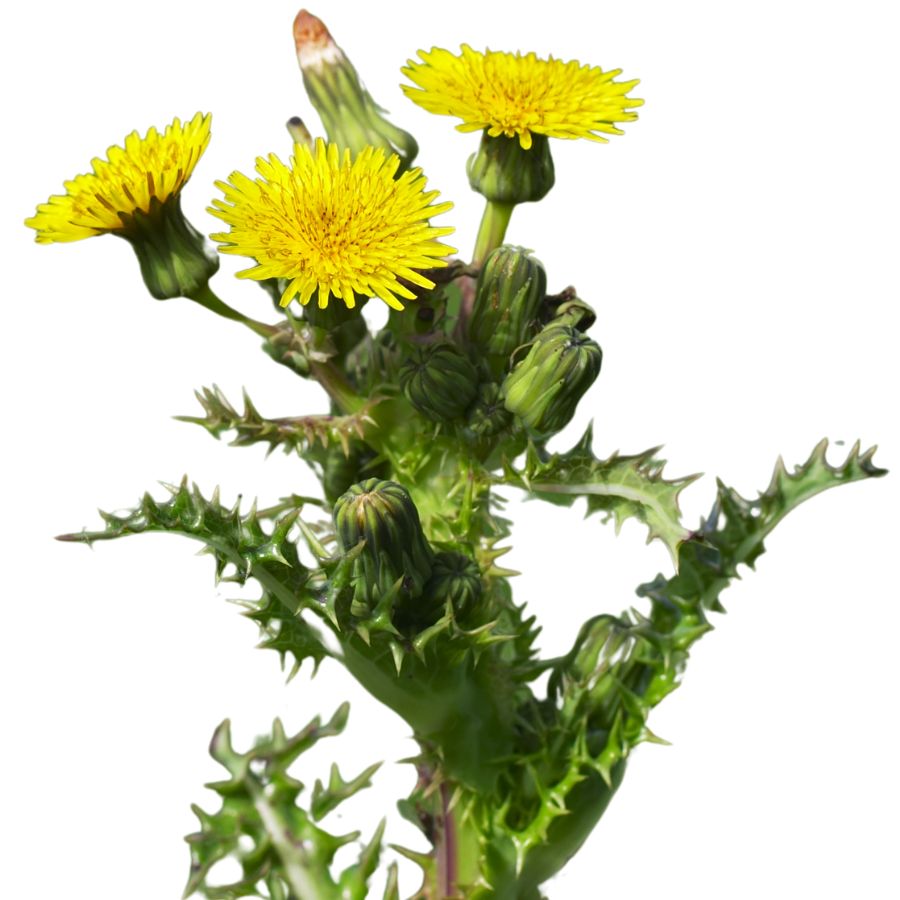
Spiny sowthistle is a common edible weed with sharp, prickled leaf edges and hollow stems that release a white sap when broken. The leaves are lobed and bluish-green with a waxy surface, and the yellow flowers resemble those of dandelions.
You can eat the young leaves raw or cooked, though they have a mild bitterness that softens with steaming or boiling. The older leaves get tough and spiny, so stick to the tender inner growth for salads or stir-fries.
Some confuse it with prickly lettuce, but spiny sowthistle has more pronounced spines along the leaf margins and a less bitter flavor overall. Avoid any lookalikes that don’t have hollow stems or that produce a sticky white sap, as those traits are key to correct ID.
The stems and roots are edible when peeled, but the sap can cause mild irritation for some people if handled too much. It’s often sautéed with garlic or added to soups, and the slightly mucilaginous texture becomes pleasantly soft when simmered.
Toxic Plants That Look Like Edible Plants
There are plenty of wild edibles to choose from, but some toxic native plants closely resemble them. Mistaking the wrong one can lead to severe illness or even death, so it’s important to know exactly what you’re picking.
Poison Hemlock (Conium maculatum)
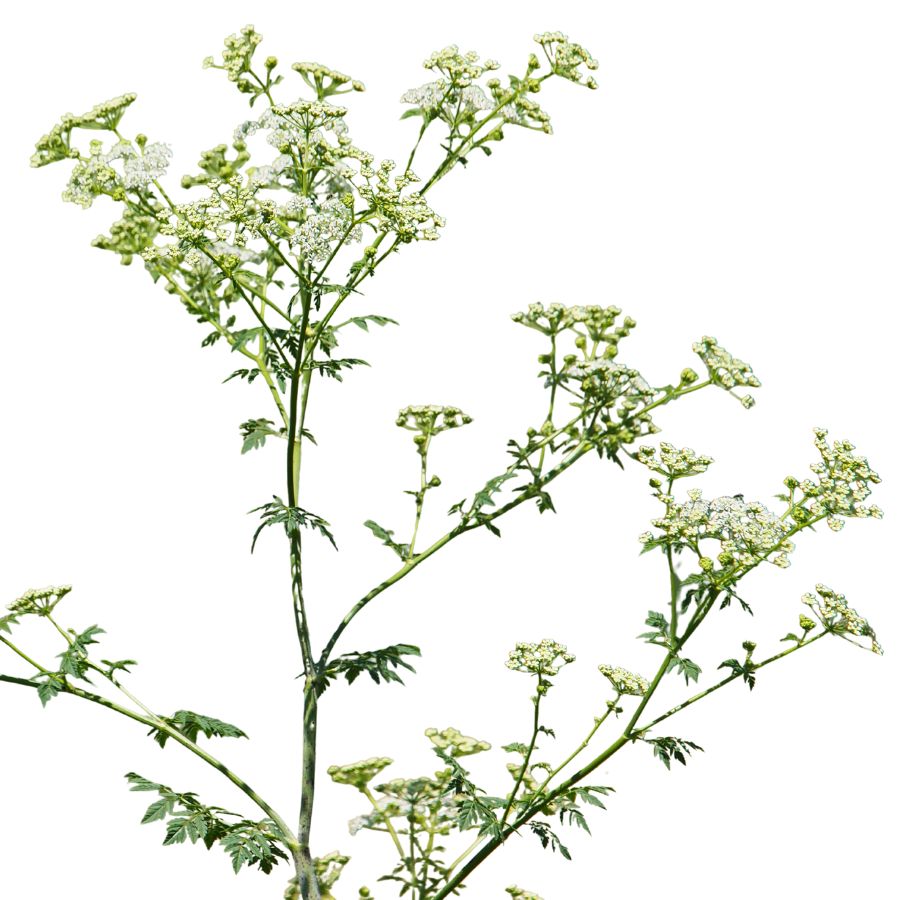
Often mistaken for: Wild carrot (Daucus carota)
Poison hemlock is a tall plant with lacy leaves and umbrella-like clusters of tiny white flowers. It has smooth, hollow stems with purple blotches and grows in sunny places like roadsides, meadows, and stream banks.
Unlike wild carrot, which has hairy stems and a dark central floret, poison hemlock has a musty odor and no flower center spot. It’s extremely toxic; just a small amount can be fatal, and even touching the sap can irritate the skin.
Water Hemlock (Cicuta spp.)
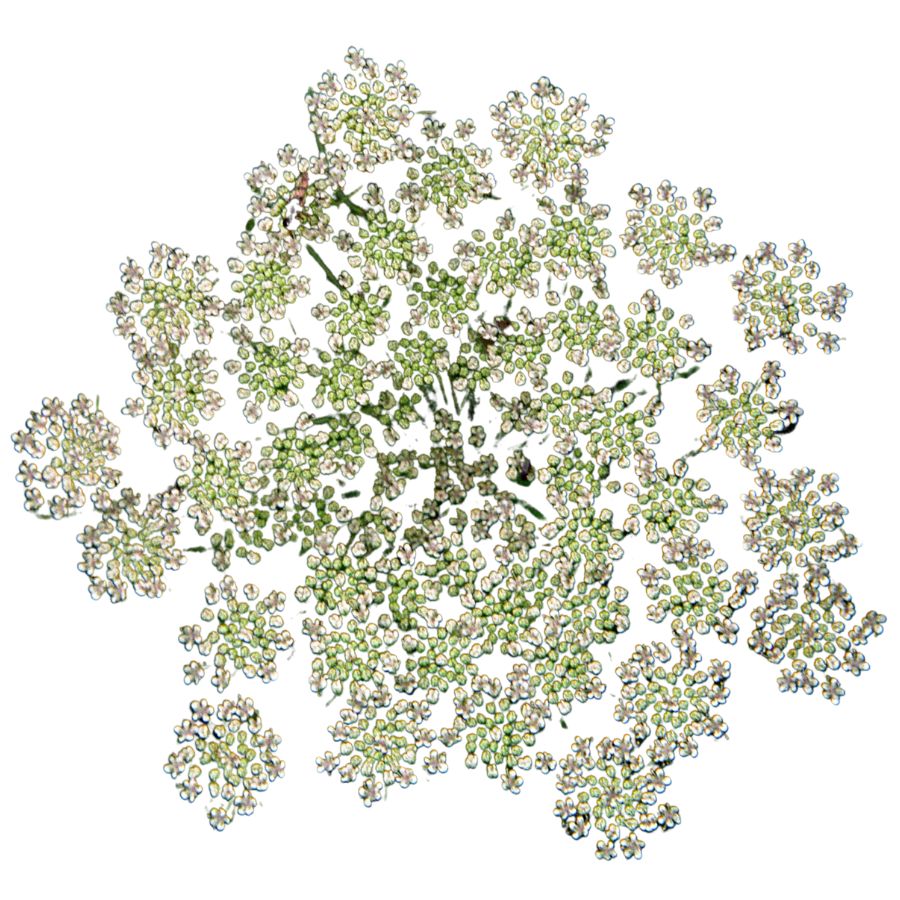
Often mistaken for: Wild parsnip (Pastinaca sativa) or wild celery (Apium spp.)
Water hemlock is a tall, branching plant with umbrella-shaped clusters of small white flowers. It grows in wet places like stream banks, marshes, and ditches, with stems that often show purple streaks or spots.
It can be confused with wild parsnip or wild celery, but its thick, hollow roots have internal chambers and release a yellow, foul-smelling sap when cut. Water hemlock is the most toxic plant in North America, and just a small amount can cause seizures, respiratory failure, and death.
False Hellebore (Veratrum viride)
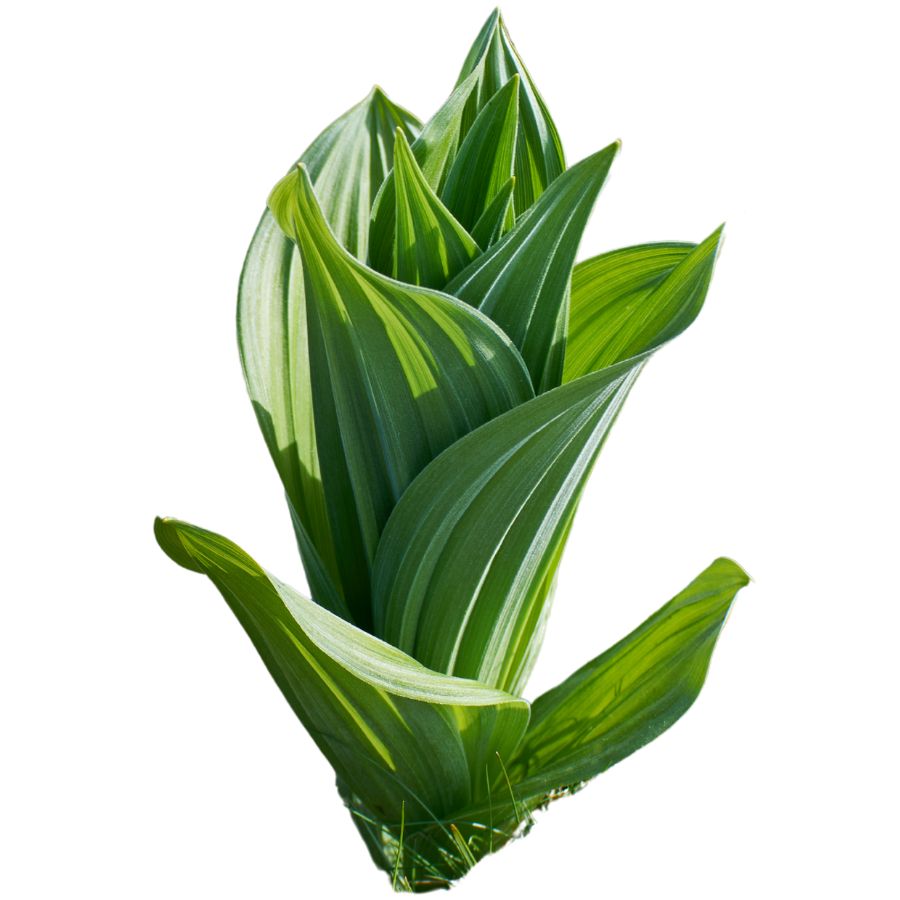
Often mistaken for: Ramps (Allium tricoccum)
False hellebore is a tall plant with broad, pleated green leaves that grow in a spiral from the base, often appearing early in spring. It grows in moist woods, meadows, and along streams.
It’s commonly mistaken for ramps, but ramps have a strong onion or garlic smell, while false hellebore is odorless and later grows a tall flower stalk. The plant is highly toxic, and eating any part can cause nausea, a slowed heart rate, and even death due to its alkaloids that affect the nervous and cardiovascular systems.
Death Camas (Zigadenus spp.)
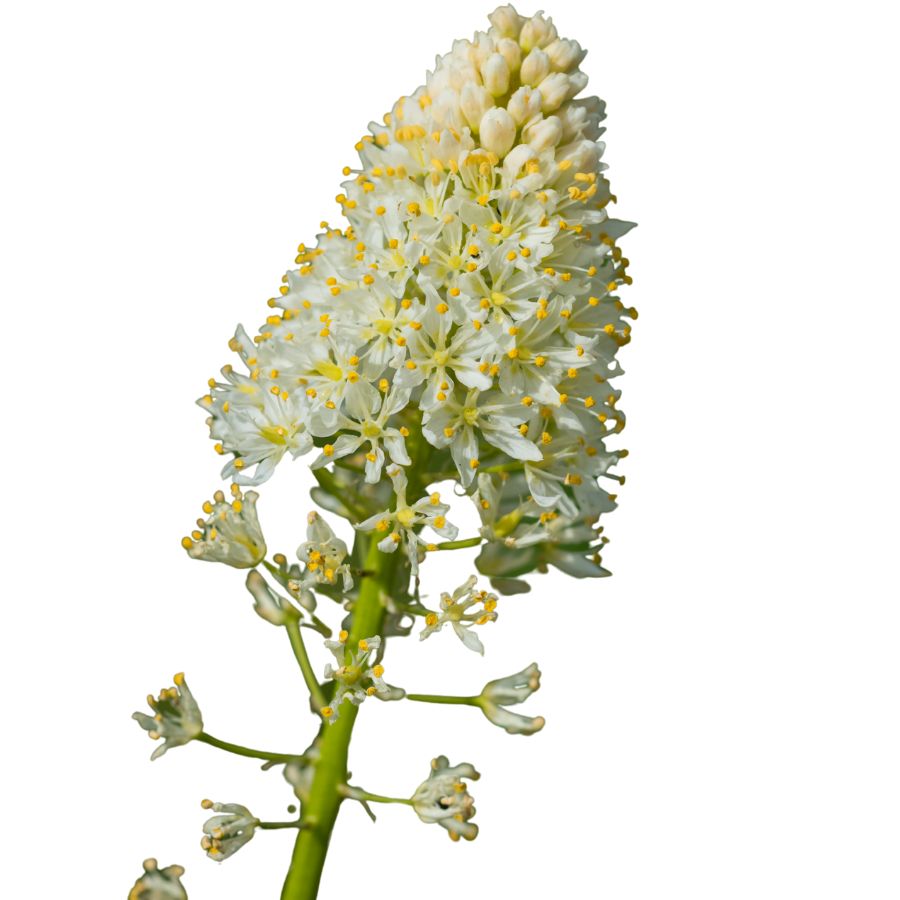
Often mistaken for: Wild onion or wild garlic (Allium spp.)
Death camas is a slender, grass-like plant that grows from underground bulbs and is found in open woods, meadows, and grassy hillsides. It has small, cream-colored flowers in loose clusters atop a tall stalk.
It’s often confused with wild onion or wild garlic due to their similar narrow leaves and habitats, but only Allium plants have a strong onion or garlic scent, while death camas has none. The plant is extremely poisonous, especially the bulbs, and even a small amount can cause nausea, vomiting, a slowed heartbeat, and potentially fatal respiratory failure.
Buckthorn Berries (Rhamnus spp.)
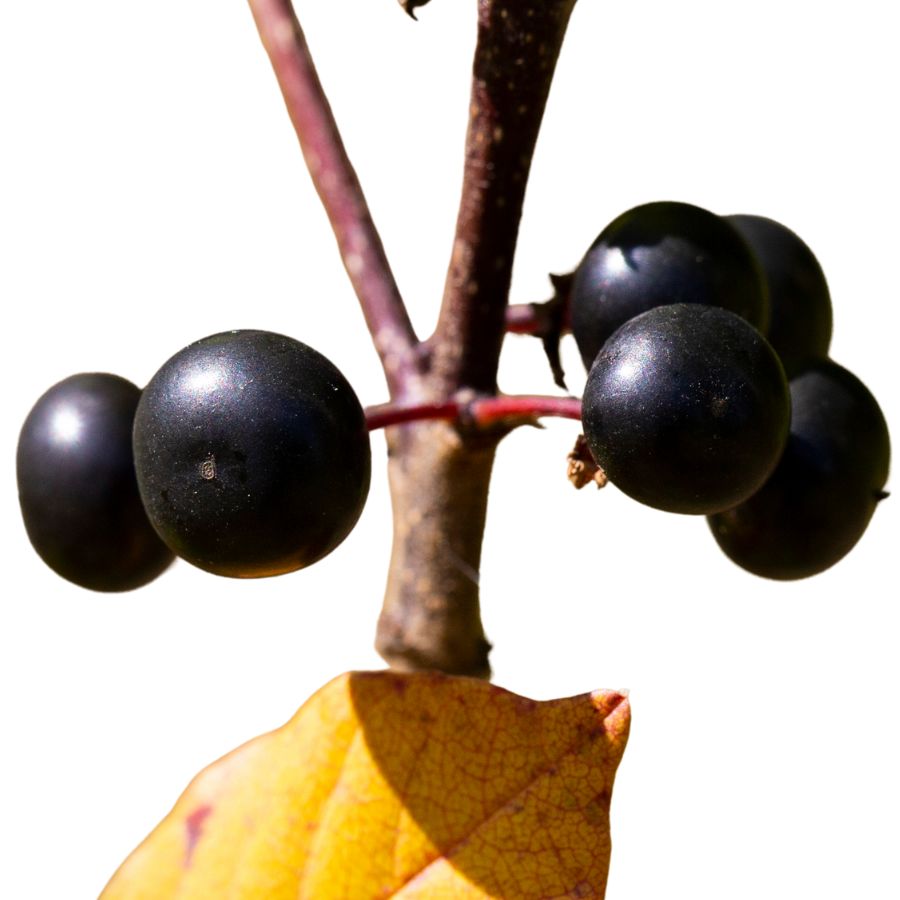
Often mistaken for: Elderberries (Sambucus spp.)
Buckthorn is a shrub or small tree often found along woodland edges, roadsides, and disturbed areas. It produces small, round berries that ripen to dark purple or black and usually grow in loose clusters.
These berries are sometimes mistaken for elderberries and other wild fruits, which also grow in dark clusters, but elderberries form flat-topped clusters on reddish stems while buckthorn berries are more scattered. Buckthorn berries are unsafe to eat as they contain compounds that can cause cramping, vomiting, and diarrhea, and large amounts may lead to dehydration and serious digestive problems.
Mayapple (Podophyllum peltatum)
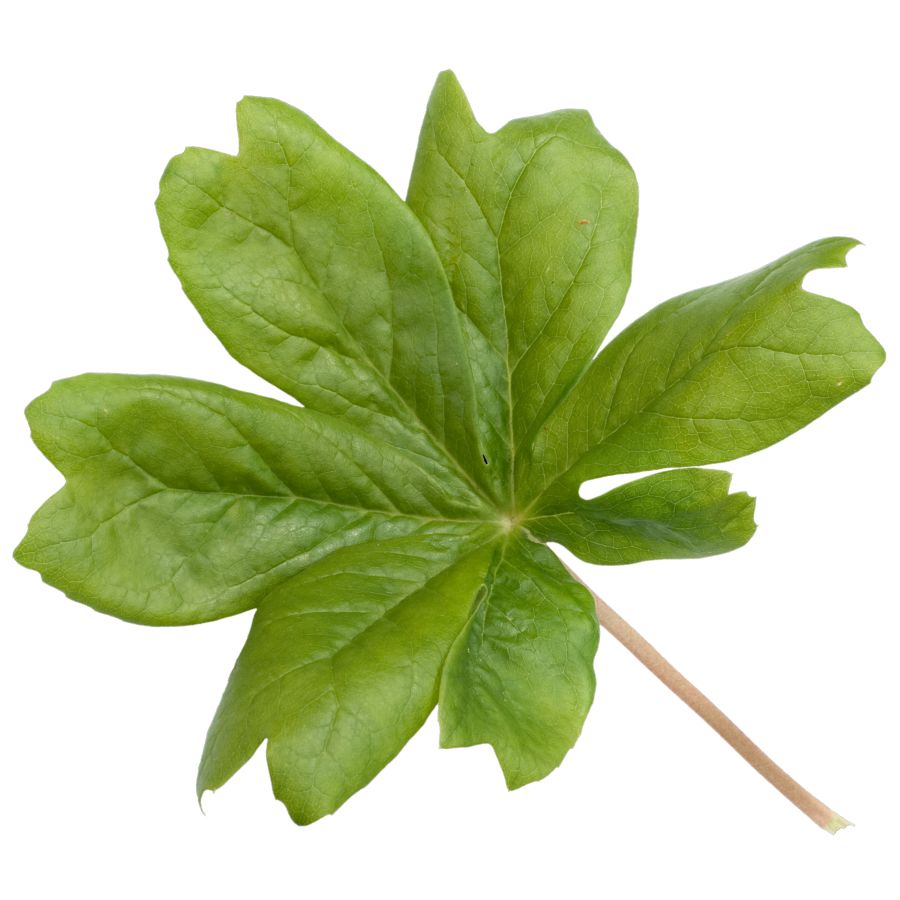
Often mistaken for: Wild grapes (Vitis spp.)
Mayapple is a low-growing plant found in shady forests and woodland clearings. It has large, umbrella-like leaves and produces a single pale fruit hidden beneath the foliage.
The unripe fruit resembles a small green grape, causing confusion with wild grapes, which grow in woody clusters on vines. All parts of the mayapple are toxic except the fully ripe, yellow fruit, which is only safe in small amounts. Eating unripe fruit or other parts can lead to nausea, vomiting, and severe dehydration.
Virginia Creeper (Parthenocissus quinquefolia)
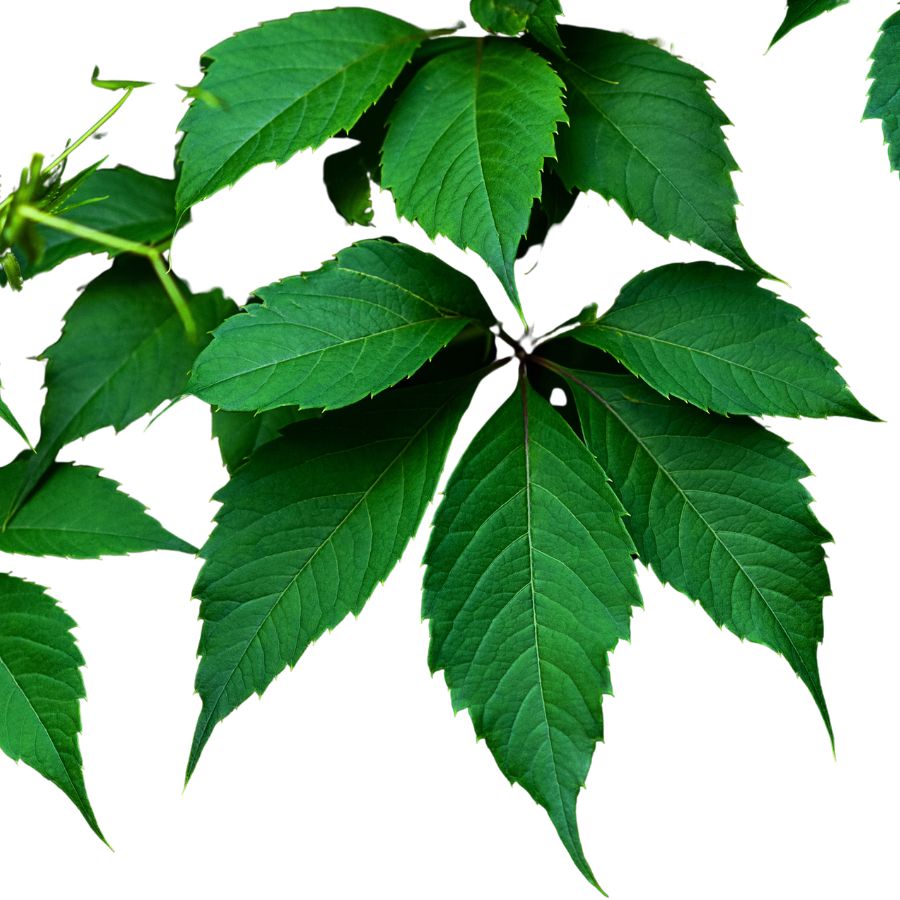
Often mistaken for: Wild grapes (Vitis spp.)
Virginia creeper is a fast-growing vine found on fences, trees, and forest edges. It has five leaflets per stem and produces small, bluish-purple berries from late summer to fall.
It’s often confused with wild grapes since both are climbing vines with similar berries, but grapevines have large, lobed single leaves and tighter fruit clusters. Virginia creeper’s berries are toxic to humans and contain oxalate crystals that can cause nausea, vomiting, and throat irritation.
Castor Bean (Ricinus communis)
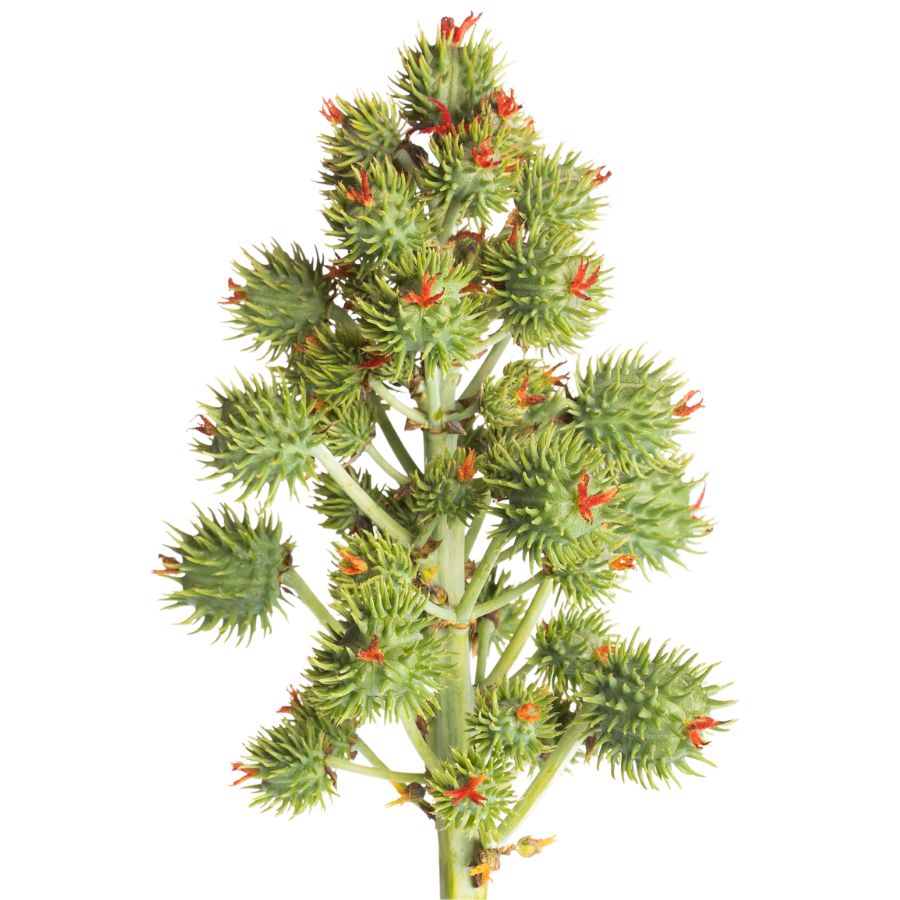
Often mistaken for: Wild rhubarb (Rumex spp. or Rheum spp.)
Castor bean is a bold plant with large, lobed leaves and tall red or green stalks, often found in gardens, along roadsides, and in disturbed areas in warmer regions in the US. Its red-tinged stems and overall size can resemble wild rhubarb to the untrained eye.
Unlike rhubarb, castor bean plants produce spiny seed pods containing glossy, mottled seeds that are extremely toxic. These seeds contain ricin, a deadly compound even in small amounts. While all parts of the plant are toxic, the seeds are especially dangerous and should never be handled or ingested.
A Quick Reminder
Before we get into the specifics about where and how to find these mushrooms, we want to be clear that before ingesting any wild mushroom, it should be identified with 100% certainty as edible by someone qualified and experienced in mushroom identification, such as a professional mycologist or an expert forager. Misidentification of mushrooms can lead to serious illness or death.
All mushrooms have the potential to cause severe adverse reactions in certain individuals, even death. If you are consuming mushrooms, it is crucial to cook them thoroughly and properly and only eat a small portion to test for personal tolerance. Some people may have allergies or sensitivities to specific mushrooms, even if they are considered safe for others.
The information provided in this article is for general informational and educational purposes only. Foraging for wild mushrooms involves inherent risks.
How to Get the Best Results Foraging
Safety should always come first when it comes to foraging. Whether you’re in a rural forest or a suburban greenbelt, knowing how to harvest wild foods properly is a key part of staying safe and respectful in the field.
Always Confirm Plant ID Before You Harvest Anything
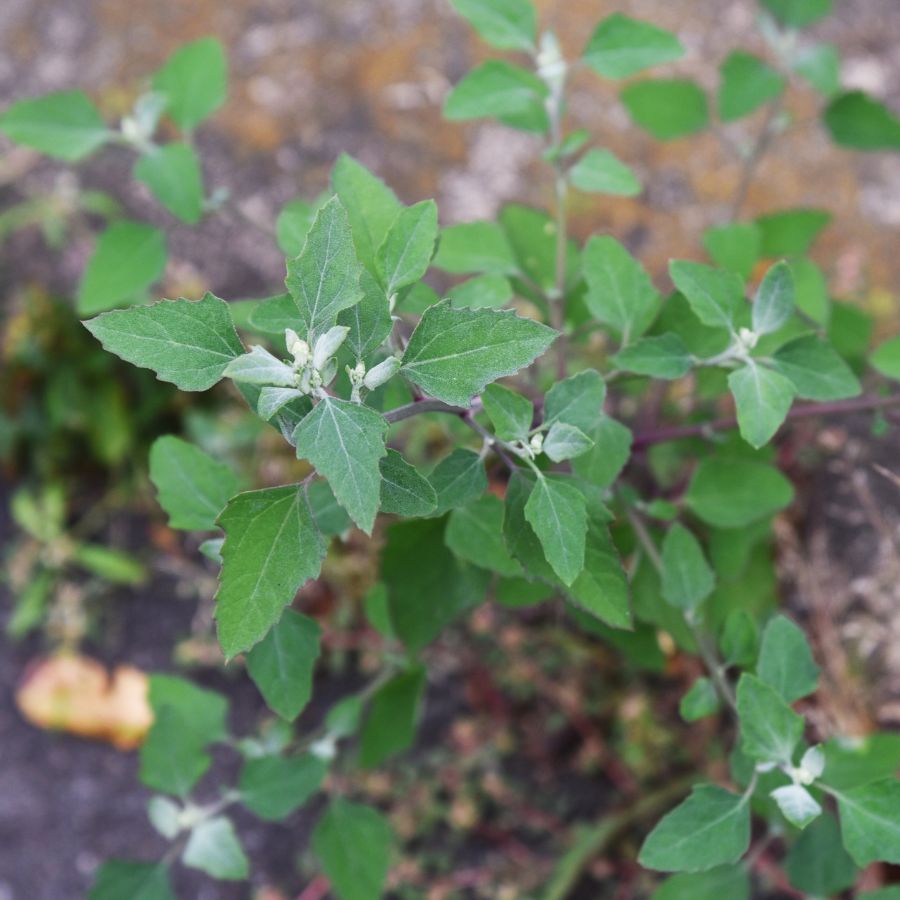
Knowing exactly what you’re picking is the most important part of safe foraging. Some edible plants have nearly identical toxic lookalikes, and a wrong guess can make you seriously sick.
Use more than one reliable source to confirm your ID, like field guides, apps, and trusted websites. Pay close attention to small details. Things like leaf shape, stem texture, and how the flowers or fruits are arranged all matter.
Not All Edible Plants Are Safe to Eat Whole
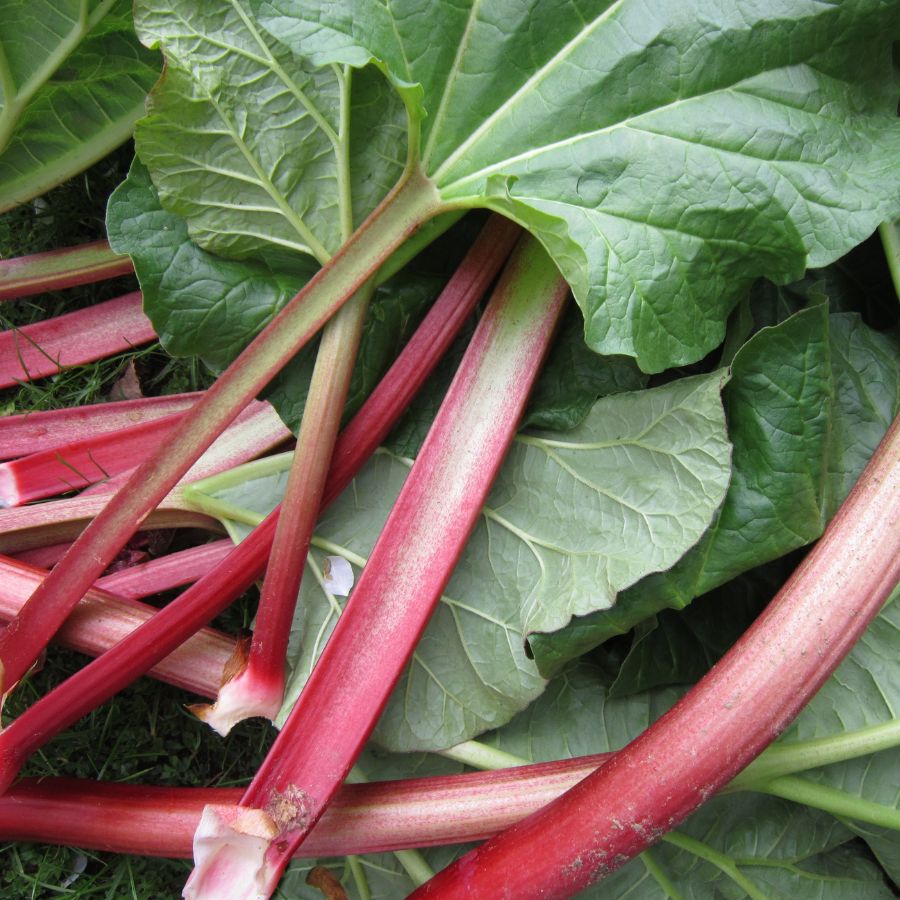
Just because a plant is edible doesn’t mean every part of it is safe. Some plants have leaves, stems, or seeds that can be toxic if eaten raw or prepared the wrong way.
For example, pokeweed is only safe when young and properly cooked, while elderberries need to be heated before eating. Rhubarb stems are fine, but the leaves are poisonous. Always look up which parts are edible and how they should be handled.
Avoid Foraging in Polluted or Contaminated Areas
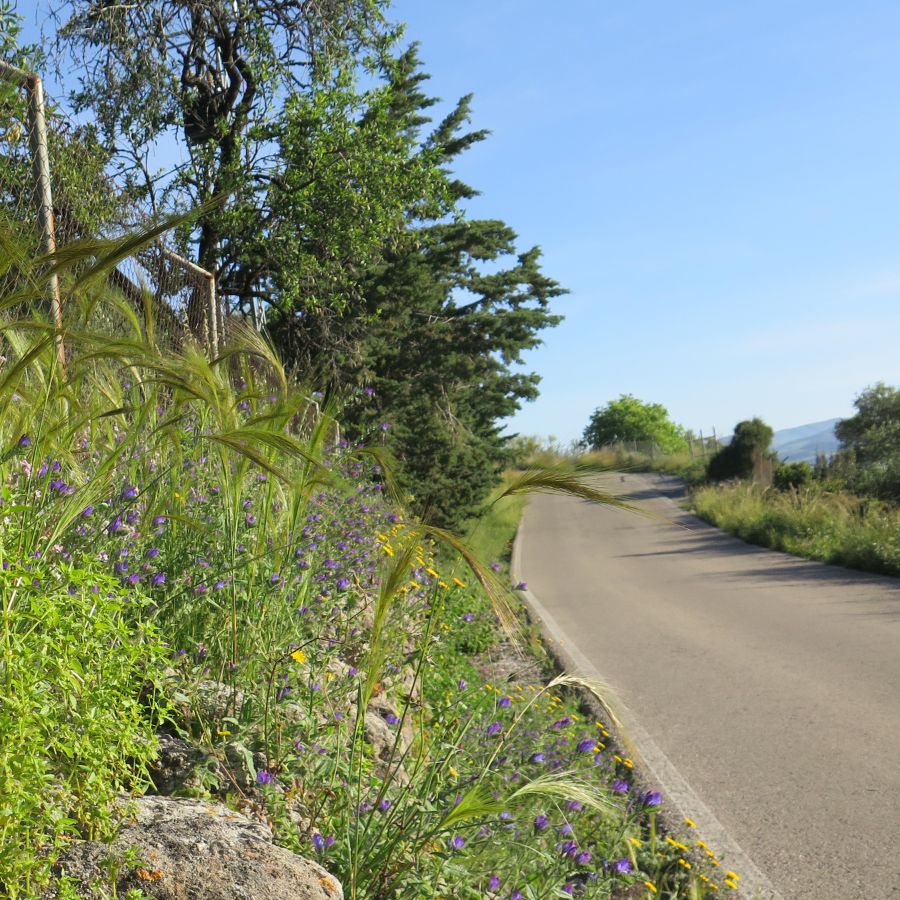
Where you forage matters just as much as what you pick. Plants growing near roads, buildings, or farmland might be coated in chemicals or growing in polluted soil.
Even safe plants can take in harmful substances from the air, water, or ground. Stick to clean, natural areas like forests, local parks that allow foraging, or your own yard when possible.
Don’t Harvest More Than What You Need
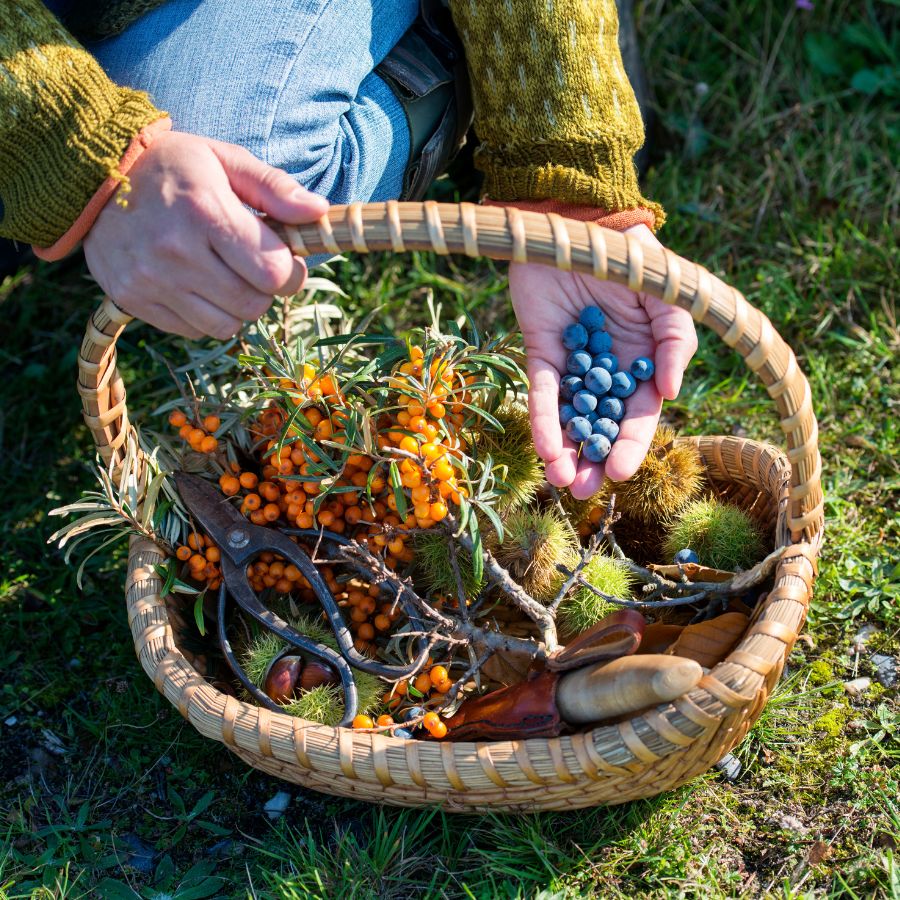
When you forage, take only what you plan to use. Overharvesting can hurt local plant populations and reduce future growth in that area.
Leaving plenty behind helps plants reproduce and supports wildlife that depends on them. It also ensures other foragers have a chance to enjoy the same resources.
Protect Yourself and Your Finds with Proper Foraging Gear

Having the right tools makes foraging easier and safer. Gloves protect your hands from irritants like stinging nettle, and a good knife or scissors lets you harvest cleanly without damaging the plant.
Use a basket or breathable bag to carry what you collect. Plastic bags hold too much moisture and can cause your greens to spoil before you get home.
This forager’s toolkit covers the essentials for any level of experience.
Watch for Allergic Reactions When Trying New Wild Foods

Even if a wild plant is safe to eat, your body might react to it in unexpected ways. It’s best to try a small amount first and wait to see how you feel.
Be extra careful with kids or anyone who has allergies. A plant that’s harmless for one person could cause a reaction in someone else.
Check Local Rules Before Foraging on Any Land
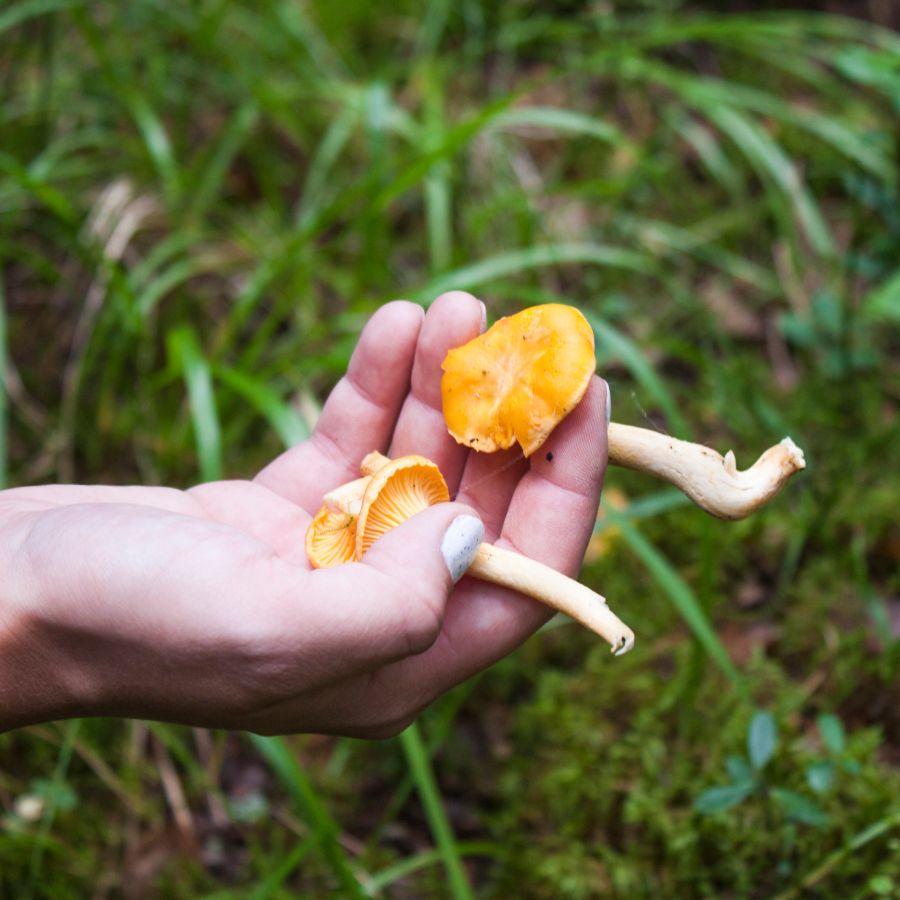
Before you start foraging, make sure you know the rules for the area you’re in. What’s allowed in one spot might be completely off-limits just a few miles away.
Some public lands permit limited foraging, while others, like national parks, usually don’t allow it at all. If you’re on private property, always get permission first.
Before you head out
Before embarking on any foraging activities, it is essential to understand and follow local laws and guidelines. Always confirm that you have permission to access any land and obtain permission from landowners if you are foraging on private property. Trespassing or foraging without permission is illegal and disrespectful.
For public lands, familiarize yourself with the foraging regulations, as some areas may restrict or prohibit the collection of mushrooms or other wild foods. These regulations and laws are frequently changing so always verify them before heading out to hunt. What we have listed below may be out of date and inaccurate as a result.
Where to Find Forageables in the State
There is a range of foraging spots where edible plants grow naturally and often in abundance:
| Plant | Locations |
| Dandelion (Taraxacum officinale) | – San Isabel National Forest – Lory State Park – Rabbit Mountain Open Space |
| Lamb’s Quarters (Chenopodium album) | – Roxborough State Park – Gunnison National Forest – Plains Conservation Center |
| Purslane (Portulaca oleracea) | – James M. Robb Colorado River State Park – Cherry Creek State Park – Arkansas River Headwaters Recreation Area |
| Chokecherry (Prunus virginiana) | – Golden Gate Canyon State Park – Rio Grande National Forest – Staunton State Park |
| Serviceberry (Amelanchier alnifolia) | – Mueller State Park – Roosevelt National Forest – Black Canyon of the Gunnison National Park |
| Oregon Grape (Mahonia repens) | – White River National Forest – Roxborough State Park – Golden Gate Canyon State Park |
| Sunflower (Helianthus annuus) | – Pawnee National Grassland – South Platte Park – Comanche National Grassland |
| Stinging Nettle (Urtica dioica) | – Eldorado Canyon State Park – Arapaho National Forest – Bear Creek Lake Park |
| Wild Mint (Mentha arvensis) | – Eleven Mile State Park – Uncompahgre National Forest – Vega State Park |
| Curly Dock (Rumex crispus) | – Chatfield State Park – Boulder Valley Ranch – Ridgway State Park |
| Yarrow (Achillea millefolium) | – Rocky Mountain National Park – Florissant Fossil Beds National Monument – State Forest State Park |
| Gooseberry (Ribes inerme) | – Pike National Forest – Rifle Falls State Park – Grand Mesa National Forest |
| Golden Currant (Ribes aureum) | – Castlewood Canyon State Park – San Juan National Forest – Pineridge Natural Area |
| Cow Parsnip (Heracleum maximum) | – Lost Creek Wilderness – Sylvan Lake State Park – West Elk Wilderness |
| Wild Strawberry (Fragaria virginiana) | – Estes Park area – Flat Tops Wilderness – Mesa Verde National Park |
| Red Raspberry (Rubus idaeus) | – Hermit Park Open Space – Wet Mountains – Indian Peaks Wilderness |
| Cattail (Typha latifolia) | – Barr Lake State Park – Fountain Creek Regional Park – Alamosa National Wildlife Refuge |
| American Plum (Prunus americana) | – Boyd Lake State Park – Cimarron National Grassland – Mount Falcon Park |
| Buffaloberry (Shepherdia argentea) | – Rifle Gap State Park – Picket Wire Canyonlands – Arkansas Riverwalk Trail |
| Wild Garlic (Allium drummondii) | – Cheyenne Mountain State Park – Bijou Creek Area – Chatfield Reservoir SWA |
| Nodding Onion (Allium cernuum) | – Mount Evans Wilderness – Horsetooth Mountain Open Space – Gunnison Gorge National Conservation Area |
| Prairie Onion (Allium textile) | – Pawnee Buttes Trailhead – Bonny Lake State Wildlife Area – Centennial Open Space at Skyview |
| Elderberry (Sambucus nigra ssp. cerulea) | – Dolores River Canyon – Rattlesnake Gulch Trail (Eldorado Canyon) – Piedra Wilderness |
| Woods’ Rose (Rosa woodsii) | – Beaver Brook Watershed – Golden Gate Canyon State Park – West Spanish Peak |
| Fireweed (Chamerion angustifolium) | – Maroon Bells-Snowmass Wilderness – East Fork Trail (Pagosa area) – Yankee Boy Basin |
| Tulip Prickly Pear Cactus (Opuntia phaeacantha) | – Dry Canyon (near Penrose) – Comanche National Grassland – Trinidad Lake State Park |
| Pigweed (Amaranthus blitoides) | – St. Vrain State Park – Pueblo Reservoir SWA – Fountain Creek Regional Trail |
| Amaranth (Amaranthus retroflexus) | – Colorado River Island SWA – South Platte Greenway – Fossil Creek Reservoir Natural Area |
| Common Evening Primrose (Oenothera biennis) | – Ridgway State Park – South Valley Park – Blanca Wetlands |
| Yellow Salsify (Tragopogon dubius) | – Hall Ranch Open Space – Gunnison Valley – Pawnee National Grassland |
| Western Sandcherry (Prunus pumila var. besseyi) | – Sand Creek Massacre National Historic Site – Fort Lyon SWA – Bent’s Old Fort National Historic Site |
| Wild Bergamot (Monarda menthifolia) | – Hermosa Creek Trail – Golden Gate Canyon State Park – Devil’s Head Trail |
| Bee Balm (Monarda fistulosa) | – Red Feather Lakes Area – Staunton State Park – Mount Garfield Trail |
| Chicory (Cichorium intybus) | – Arkansas Headwaters Recreation Area – Boulder Creek Path – Coal Creek Trail (Erie area) |
| Common Peppergrass (Lepidium densiflorum) | – South Shoreline Trail (Boyd Lake) – Big Johnson Reservoir Open Space – Cherry Creek Spillway Trail |
| Mallow (Malva neglecta) | – Rio Grande SWA (Monte Vista area) – Windsor Lake Trail – East Reservoir Ridge Natural Area |
| Shepherd’s Purse (Capsella bursa-pastoris) | – Tom Frost Reservoir Open Space – North Sterling State Park – Monument Valley Park |
| Mountain Sorrel (Oxyria digyna) | – San Juan Mountains (Ice Lakes Basin) – Continental Divide Trail (Collegiate Peaks) – Mt. Sneffels Wilderness |
| Wild Grape (Vitis riparia) | – Yampa River State Park – Rifle Mountain Park – South Canyon Trail (Glenwood Springs) |
| Thimbleberry (Rubus parviflorus) | – Brainard Lake Recreation Area – Ophir Pass Area – Kebler Pass |
| Common Mullein (Verbascum thapsus) | – Canyon of the Ancients National Monument – Garden Park Fossil Area – Antero Reservoir SWA |
| Cleavers (Galium aparine) | – Bobcat Ridge Natural Area – Castle Creek Trail – West Plum Creek Trail |
| Hawthorn (Crataegus rivularis) | – Cherry Creek Ecological Park – Piedra River Trail – Upper Bear Creek Trail |
| Spiny Sowthistle (Sonchus asper) | – Centennial Trail (Cañon City) – Highline Canal Trail – Clear Creek Greenbelt |
Peak Foraging Seasons
Different edible plants grow at different times of year, depending on the season and weather. Timing your search makes all the difference.
Spring
Spring brings a fresh wave of wild edible plants as the ground thaws and new growth begins:
| Plant | Months | Best Weather Conditions |
| Dandelion (Taraxacum officinale) | March–May | Cool, moist mornings after light rain |
| Wild Garlic (Allium drummondii) | March–May | Mild days with some recent rainfall |
| Shepherd’s Purse (Capsella bursa-pastoris) | March–May | Cool, overcast days with damp soil |
| Cleavers (Galium aparine) | March–May | Cloudy, wet conditions near shrubs |
| Stinging Nettle (Urtica dioica) | April–June | Damp, overcast days with soft soil |
| Curly Dock (Rumex crispus) | April–May | Partly cloudy days with moist soil |
| Oregon Grape (Mahonia repens) | April–May | Dry, sunny slopes after snowmelt |
| Golden Currant (Ribes aureum) | April–May | Mild sunny days with early spring moisture |
| Mallow (Malva neglecta) | April–May | Mild days after spring rains |
| Yellow Salsify (Tragopogon dubius) | April–May | Sunny days following light moisture |
| Common Peppergrass (Lepidium densiflorum) | April–May | Lightly breezy, sunny days after rain |
| Cow Parsnip (Heracleum maximum) | May | Cool temperatures following spring thaw |
| Yarrow (Achillea millefolium) | May | Sunny to partly cloudy with mild breeze |
| Wild Strawberry (Fragaria virginiana) | May | Cool mornings with light dew |
| Chicory (Cichorium intybus) | May | Clear skies with warming soil |
| Woods’ Rose (Rosa woodsii) | May | Moist spring mornings with warming temps |
| Mountain Sorrel (Oxyria digyna) | May | Snowmelt-driven moisture and sun at high elevation |
Summer
Summer is a peak season for foraging, with fruits, flowers, and greens growing in full force:
| Plant | Months | Best Weather Conditions |
| Cleavers (Galium aparine) | June | Cool, damp shaded spots early in day |
| Shepherd’s Purse (Capsella bursa-pastoris) | June | Clear mornings with dew-covered ground |
| Serviceberry (Amelanchier alnifolia) | June–July | Dry, warm days at high elevations |
| Cow Parsnip (Heracleum maximum) | June–July | Overcast mornings along streams |
| Prairie Onion (Allium textile) | June–July | Dry, sunny days in prairies |
| Lamb’s Quarters (Chenopodium album) | June–August | Sunny mornings after light rain |
| Gooseberry (Ribes inerme) | June–August | Cloudy afternoons with high humidity |
| Wild Mint (Mentha arvensis) | June–August | Damp stream edges after rain |
| Yarrow (Achillea millefolium) | June–August | Clear mornings in meadows |
| Cattail (Typha latifolia) | June–August | Warm, still days near water edges |
| Fireweed (Chamerion angustifolium) | June–August | Sunny or partly cloudy alpine zones |
| Common Evening Primrose (Oenothera biennis) | June–August | Dry, open areas with full sun |
| Bee Balm (Monarda fistulosa) | June–August | Humid mornings along sunny trails |
| Spiny Sowthistle (Sonchus asper) | June–August | Partly cloudy, post-rain conditions |
| Chicory (Cichorium intybus) | June–August | Sunny roadsides with dry soil |
| Mallow (Malva neglecta) | June–August | Hot days with shaded soil |
| Common Mullein (Verbascum thapsus) | June–August | Dry slopes in full sun |
| Chokecherry (Prunus virginiana) | July–August | Warm days with occasional rain |
| Red Raspberry (Rubus idaeus) | July–August | Humid conditions after rain |
| Nodding Onion (Allium cernuum) | July–August | Sunny slopes with light breeze |
| Elderberry (Sambucus nigra ssp. cerulea) | July–August | Warm days with light humidity near streams |
| Wild Bergamot (Monarda menthifolia) | July–August | Mid-elevation meadows during warm days |
| Purslane (Portulaca oleracea) | July–September | Hot, dry days with occasional storms |
| Sunflower (Helianthus annuus) | July–September | Hot, sunny days with well-drained soil |
| Amaranth (Amaranthus retroflexus) | July–September | Warm sunny weather with loose soil |
| Pigweed (Amaranthus blitoides) | June–September | Hot, dry afternoons with recent moisture |
Fall
As temperatures drop, many edible plants shift underground or produce their last harvests:
| Plant | Months | Best Weather Conditions |
| Thimbleberry (Rubus parviflorus) | August–September | Cool mornings in shaded forest clearings |
| Chokecherry (Prunus virginiana) | Early September | Clear skies following late summer rains |
| Fireweed (Chamerion angustifolium) | Early September | Cool days following summer storms |
| Lamb’s Quarters (Chenopodium album) | September | Sunny afternoons with dry soil |
| Purslane (Portulaca oleracea) | September | Hot early fall days before first frost |
| Sunflower (Helianthus annuus) | September | Bright, dry days with low humidity |
| American Plum (Prunus americana) | September | Mild afternoons with crisp nights |
| Elderberry (Sambucus nigra ssp. cerulea) | September | Late warm spells before first frost |
| Woods’ Rose (Rosa woodsii) | September | Clear skies, high-elevation chill |
| Western Sandcherry (Prunus pumila var. besseyi) | September | Crisp air and dry conditions at edge zones |
| Buffaloberry (Shepherdia argentea) | September–October | Cool, dry days with early morning sun |
| Wild Grape (Vitis riparia) | September–October | Sunny, dry afternoons after cooler nights |
| Hawthorn (Crataegus rivularis) | September–October | Dry, mild days with cold nights |
Winter
Winter foraging is limited but still possible, with hardy plants and preserved growth holding on through the cold:
| Plant | Months | Best Weather Conditions |
| Cattail (Typha latifolia) | December–February (roots) | Frozen wetlands or during winter thaw |
| Common Mullein (Verbascum thapsus) | December–February | Sunny winter days with exposed, dry slopes |
| Wild Garlic (Allium drummondii) | February | Warm spells between snowfalls |
| Curly Dock (Rumex crispus) | February | Mild winter days with soft, unfrozen ground |
| Yarrow (Achillea millefolium) | February | Low-snow areas with sunny breaks |
| Yellow Salsify (Tragopogon dubius) | February | Mild winter breaks with soft ground |
| Shepherd’s Purse (Capsella bursa-pastoris) | February | Cool, thawed patches in low-snow areas |
| Mallow (Malva neglecta) | February | Sunny, sheltered locations with moist soil |
One Final Disclaimer
The information provided in this article is for general informational and educational purposes only. Foraging for wild plants and mushrooms involves inherent risks. Some wild plants and mushrooms are toxic and can be easily mistaken for edible varieties.
Before ingesting anything, it should be identified with 100% certainty as edible by someone qualified and experienced in mushroom and plant identification, such as a professional mycologist or an expert forager. Misidentification can lead to serious illness or death.
All mushrooms and plants have the potential to cause severe adverse reactions in certain individuals, even death. If you are consuming foraged items, it is crucial to cook them thoroughly and properly and only eat a small portion to test for personal tolerance. Some people may have allergies or sensitivities to specific mushrooms and plants, even if they are considered safe for others.
Foraged items should always be fully cooked with proper instructions to ensure they are safe to eat. Many wild mushrooms and plants contain toxins and compounds that can be harmful if ingested.

